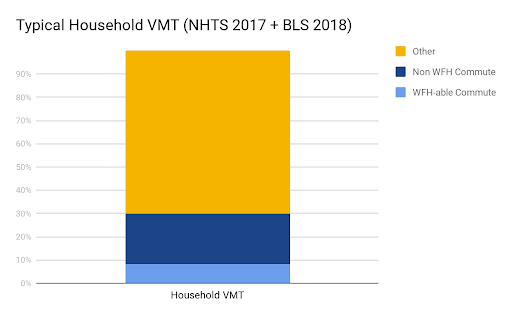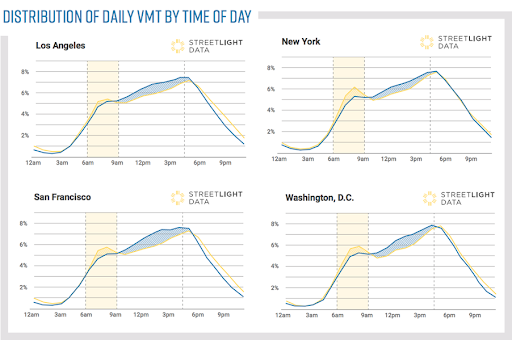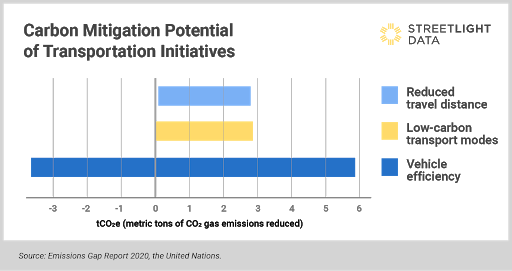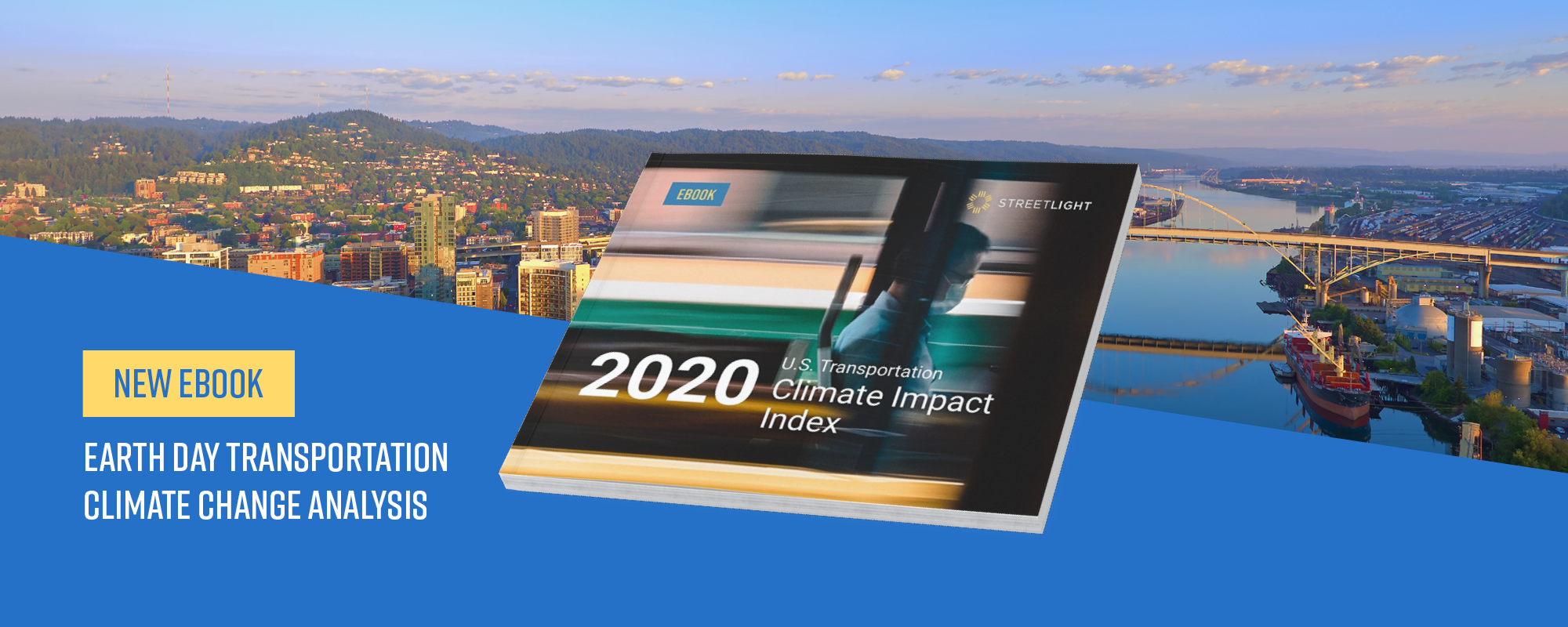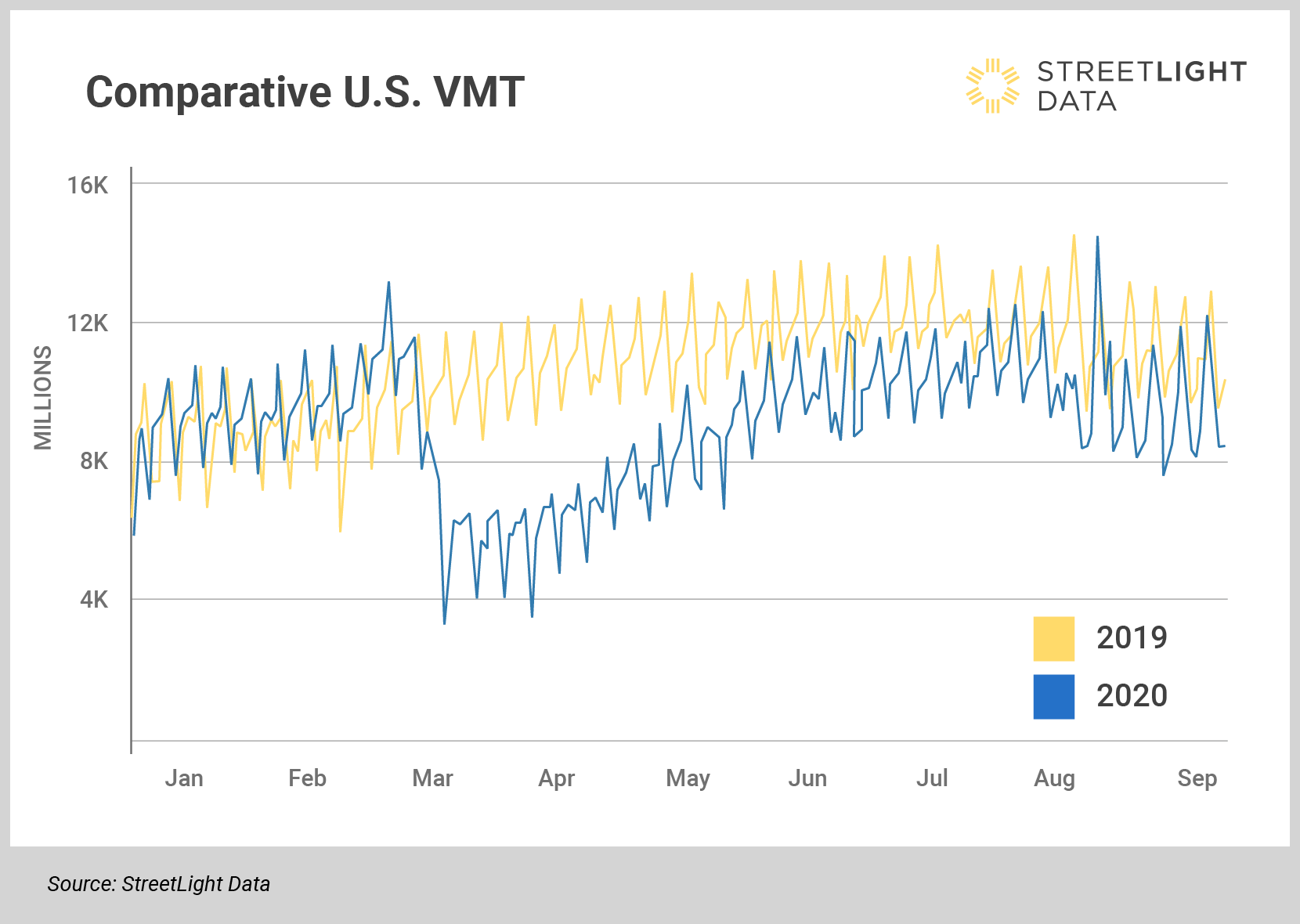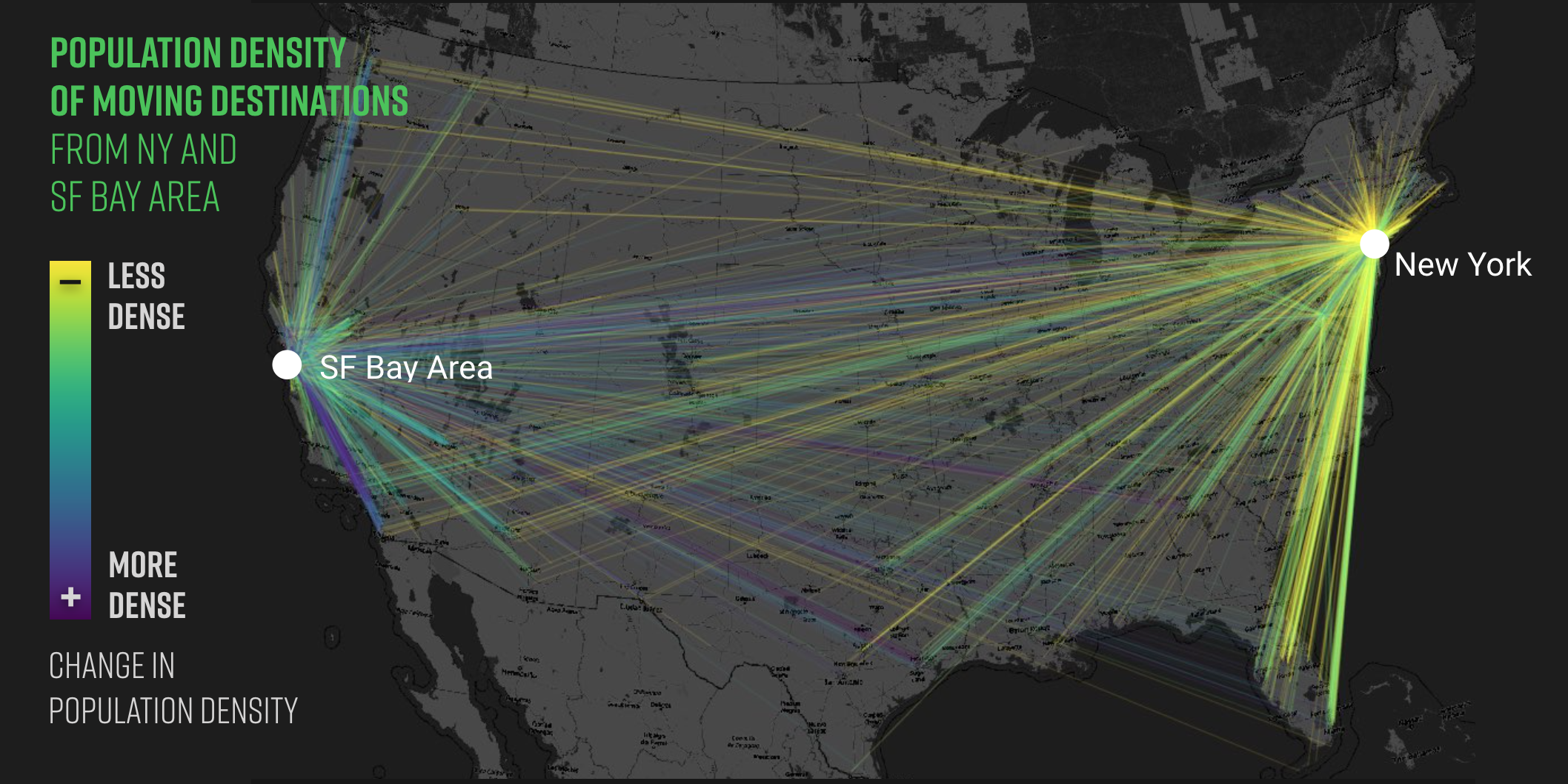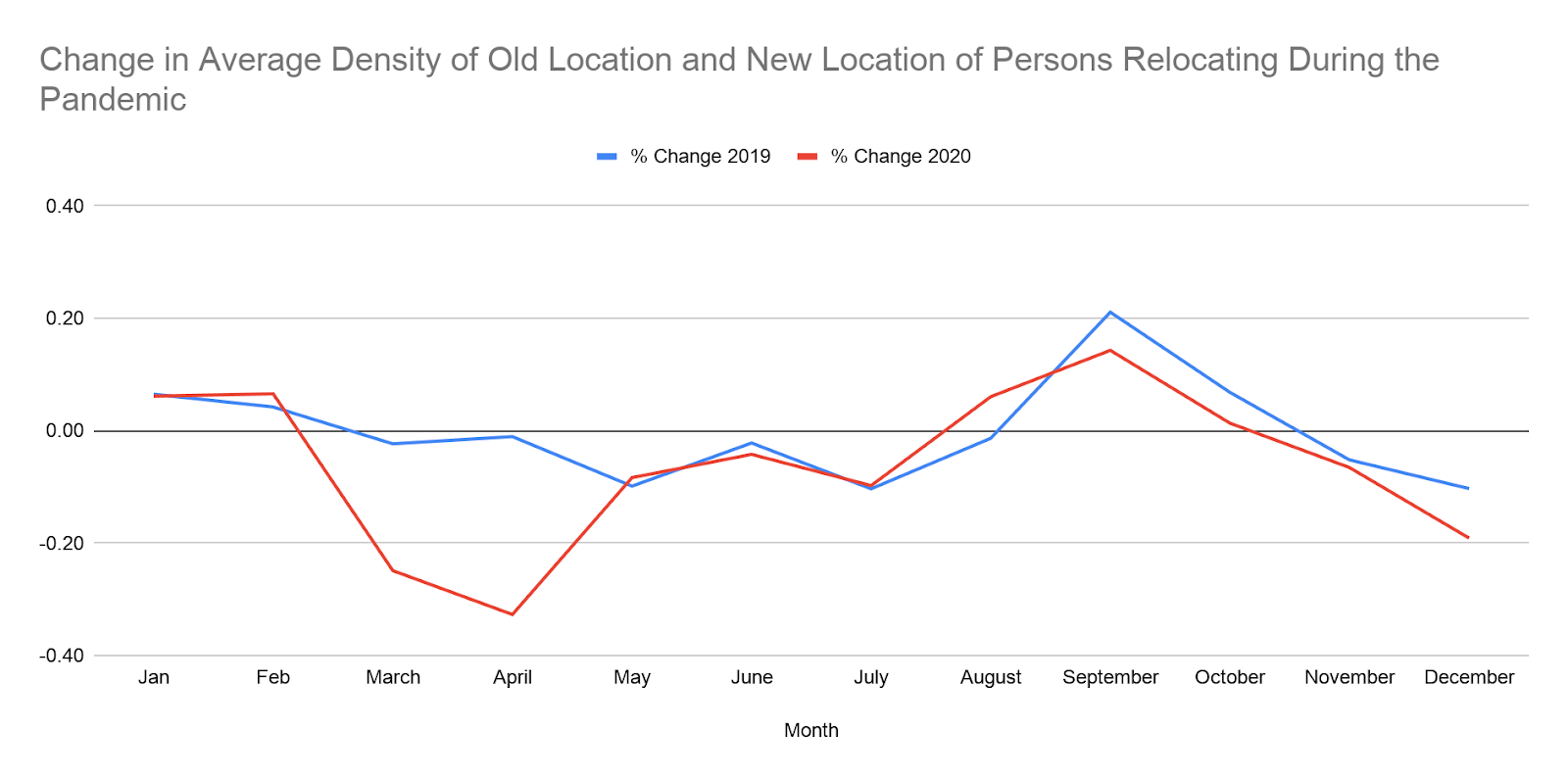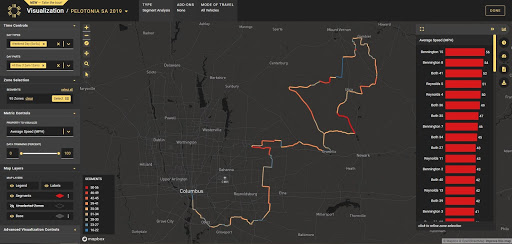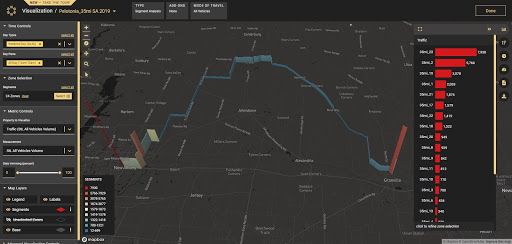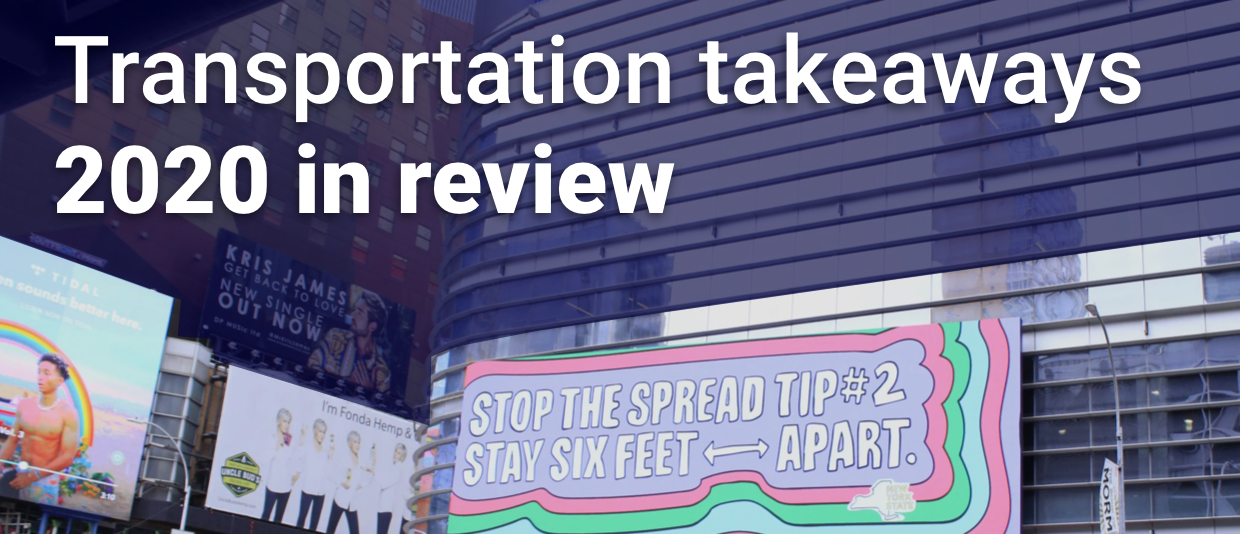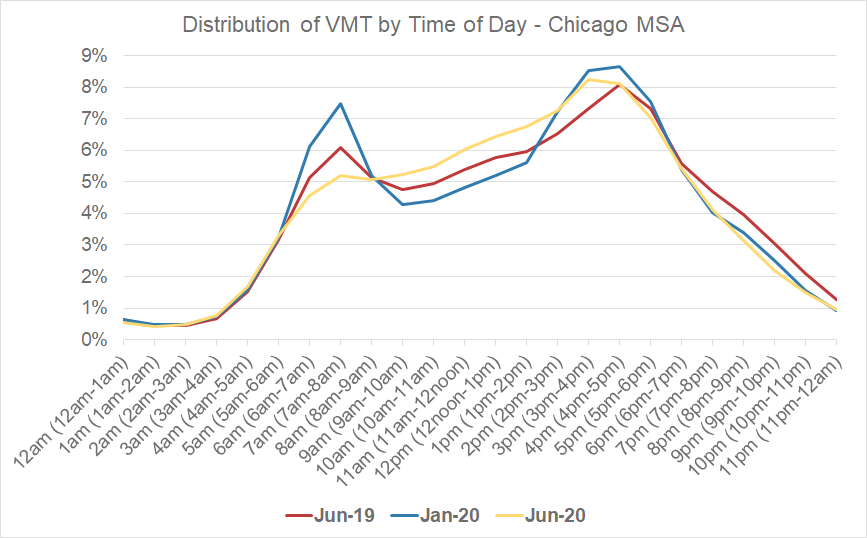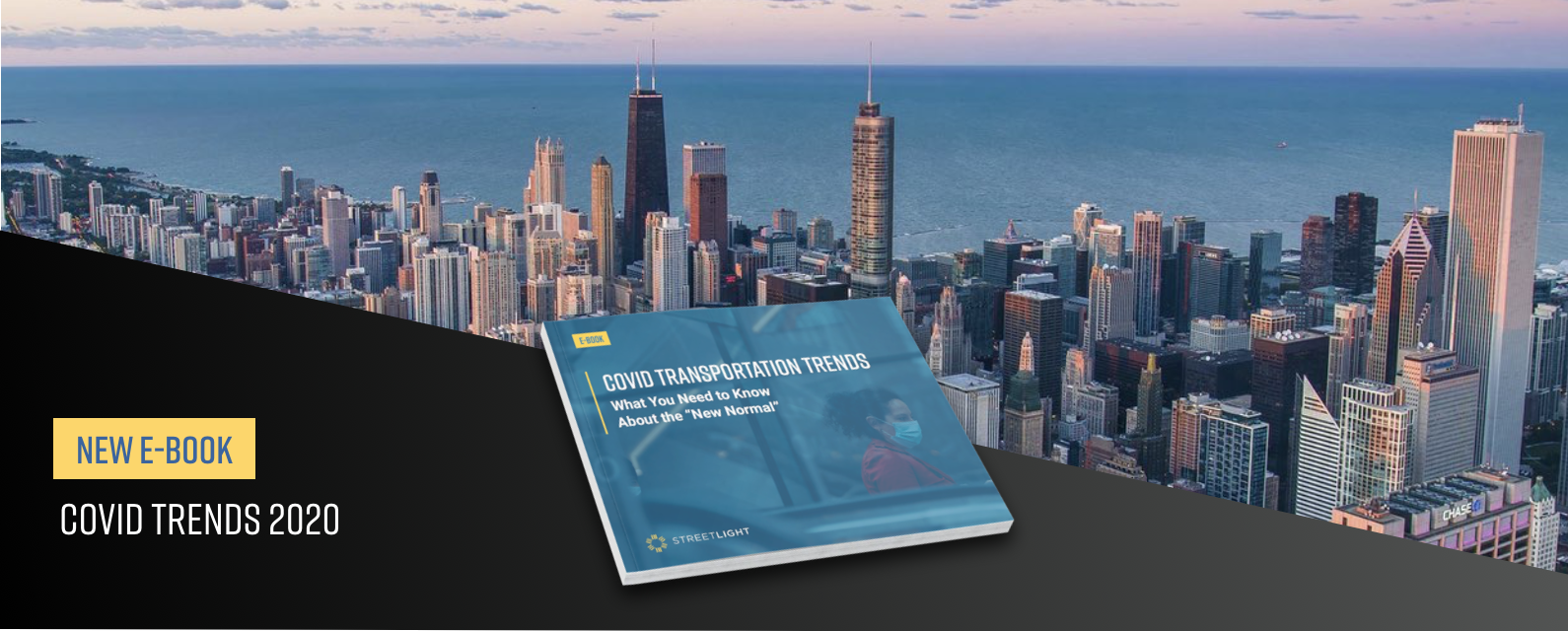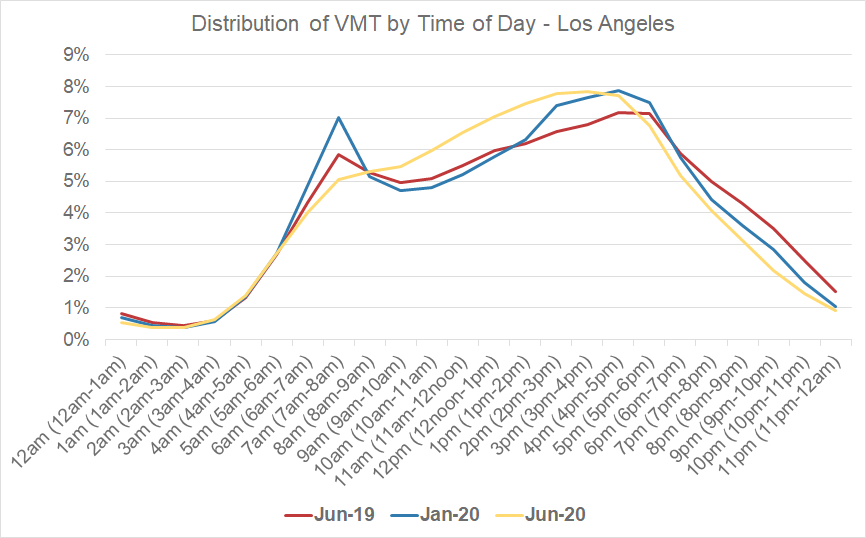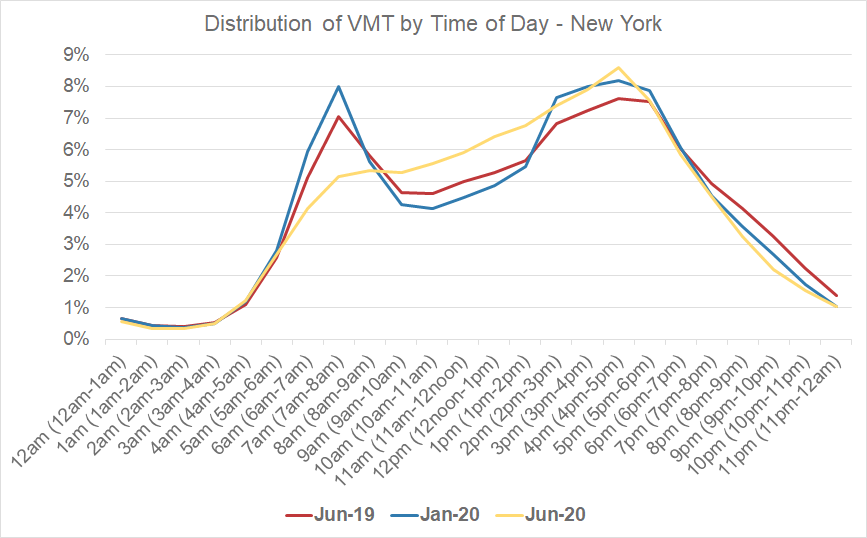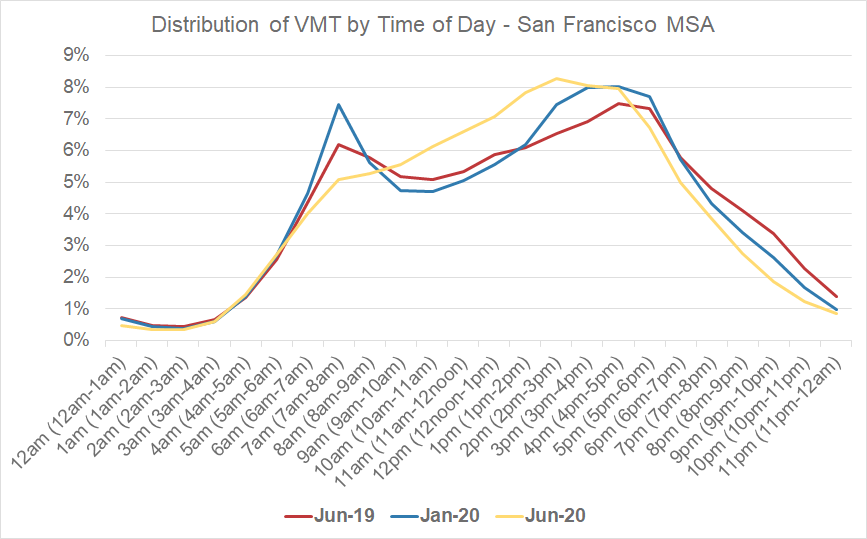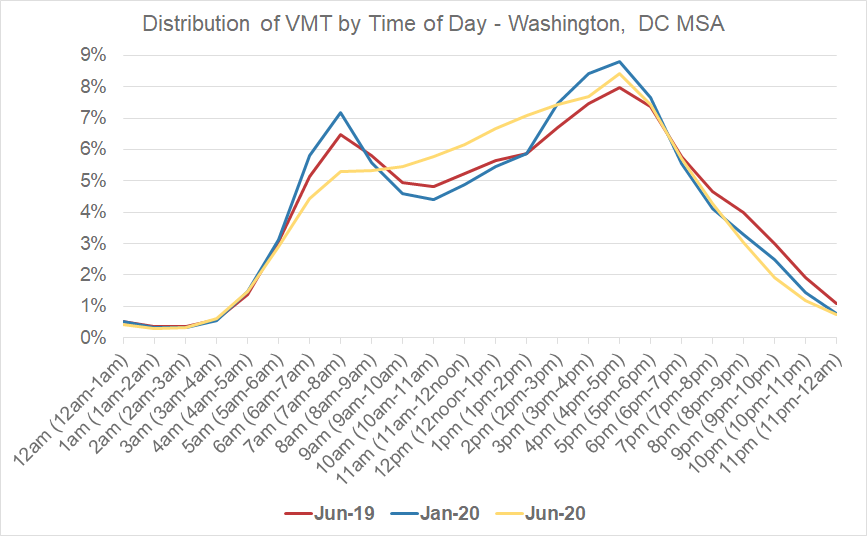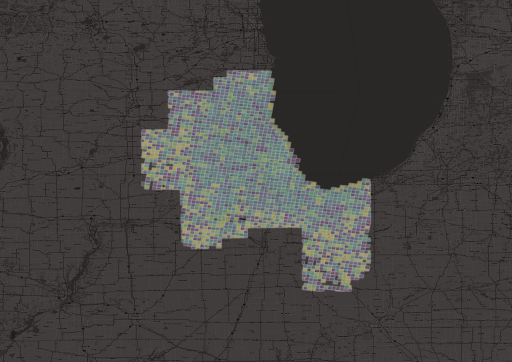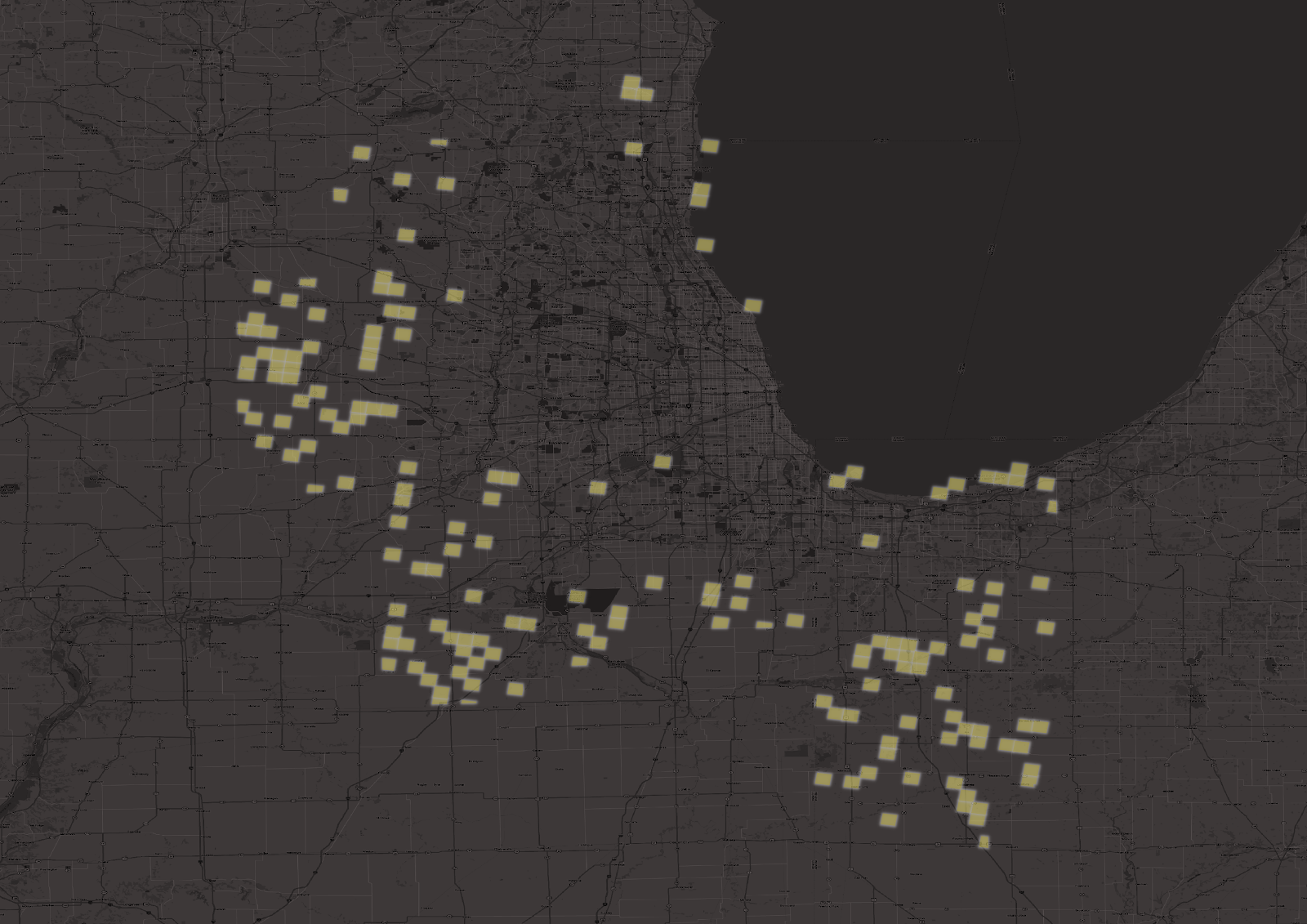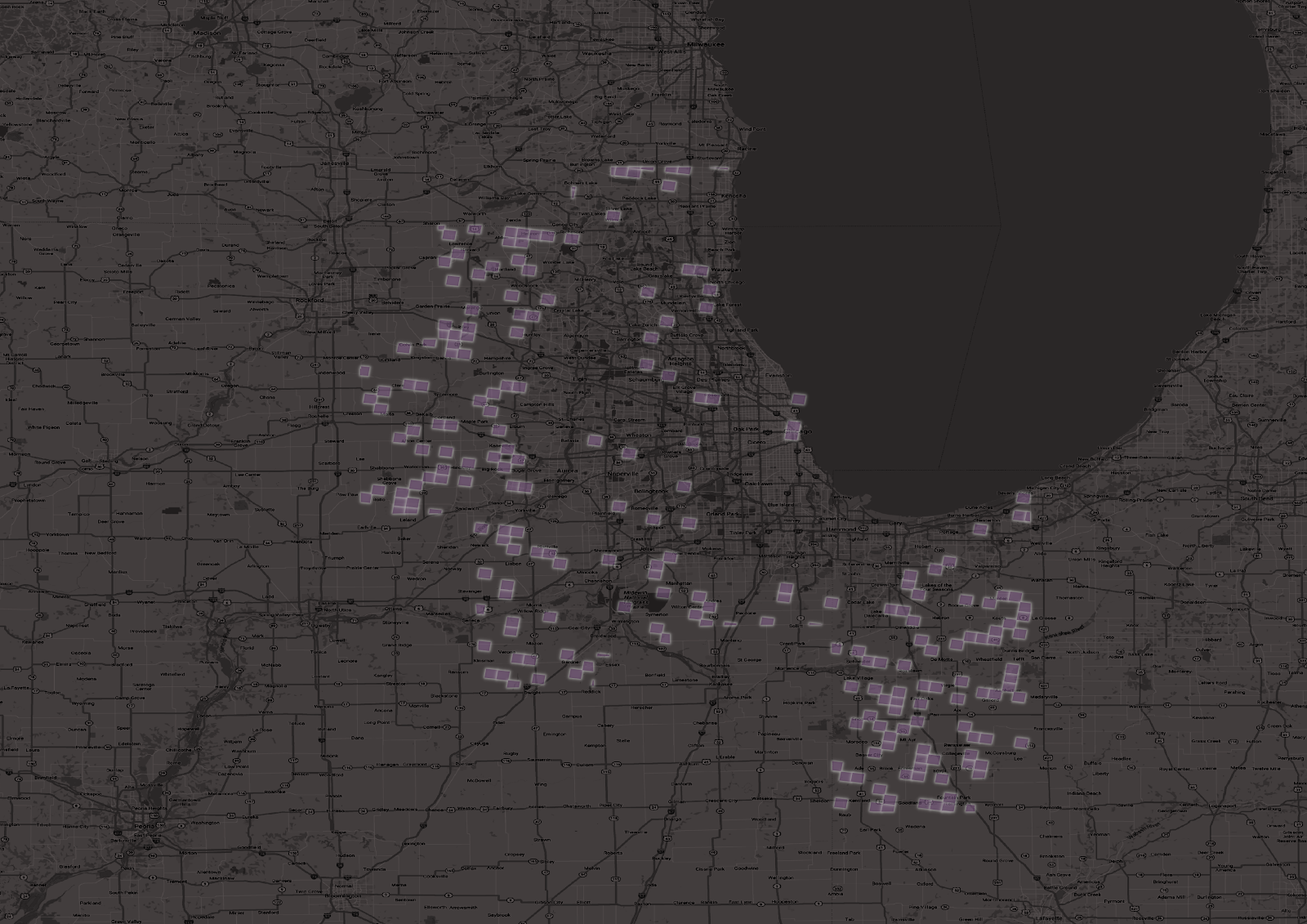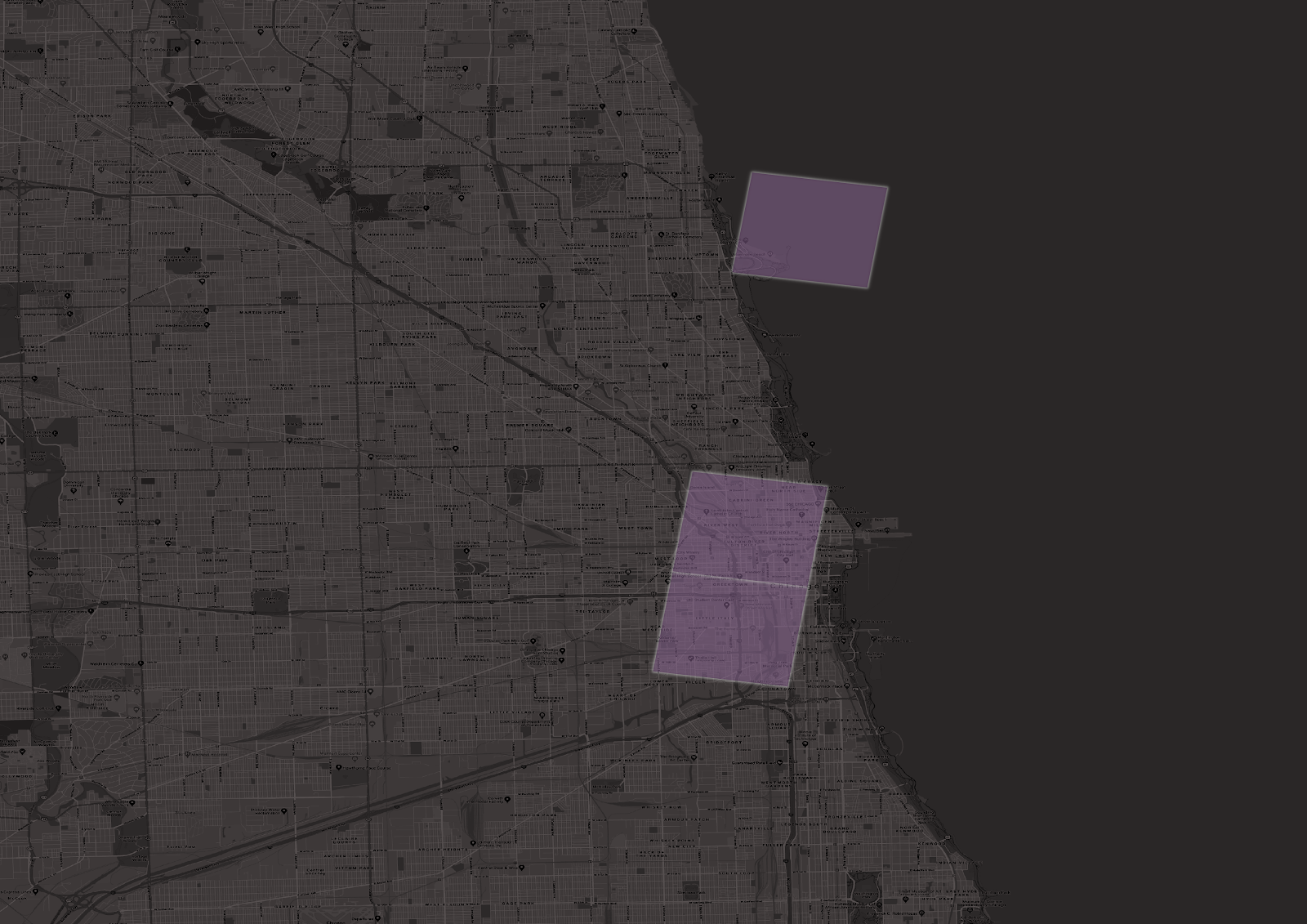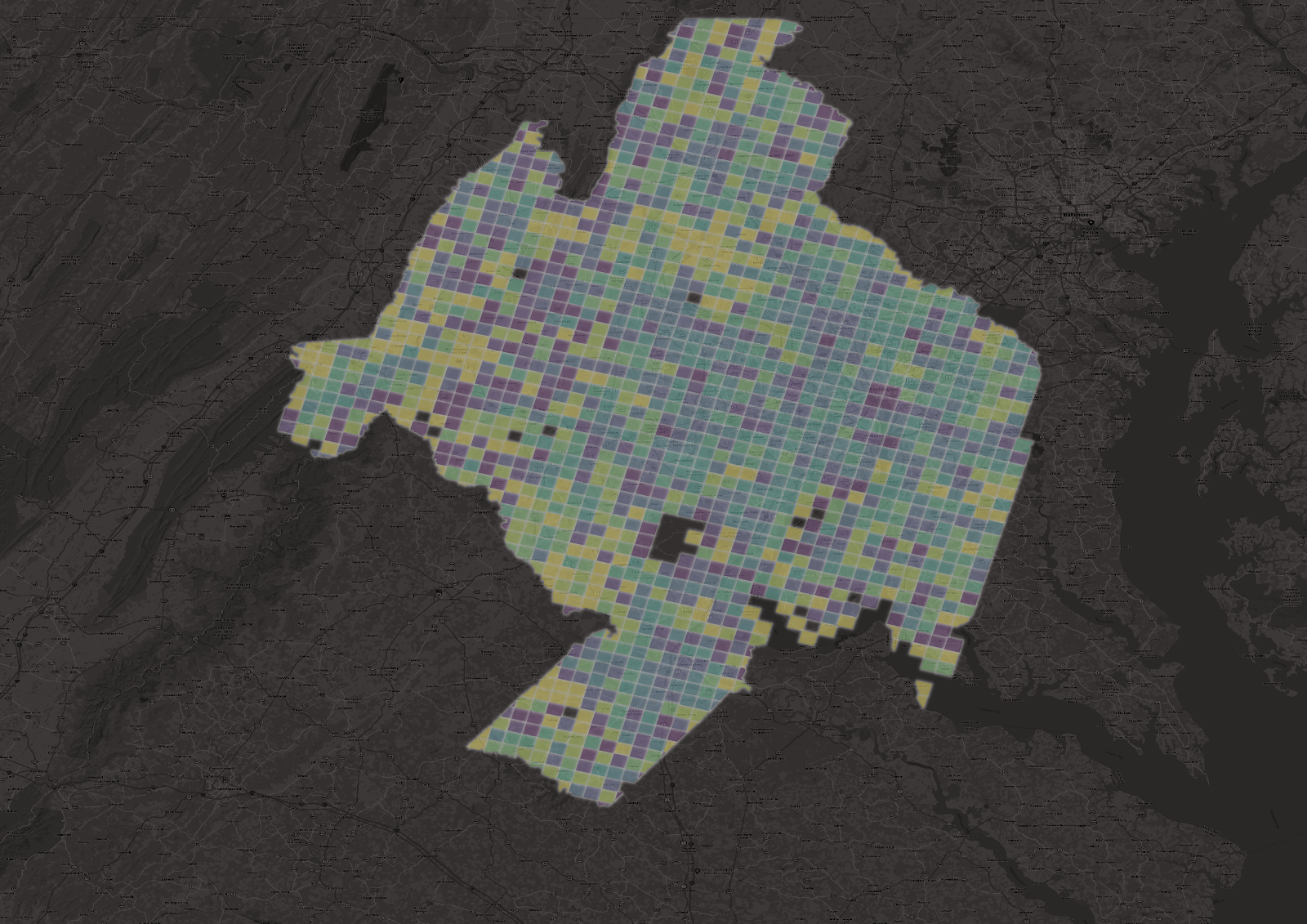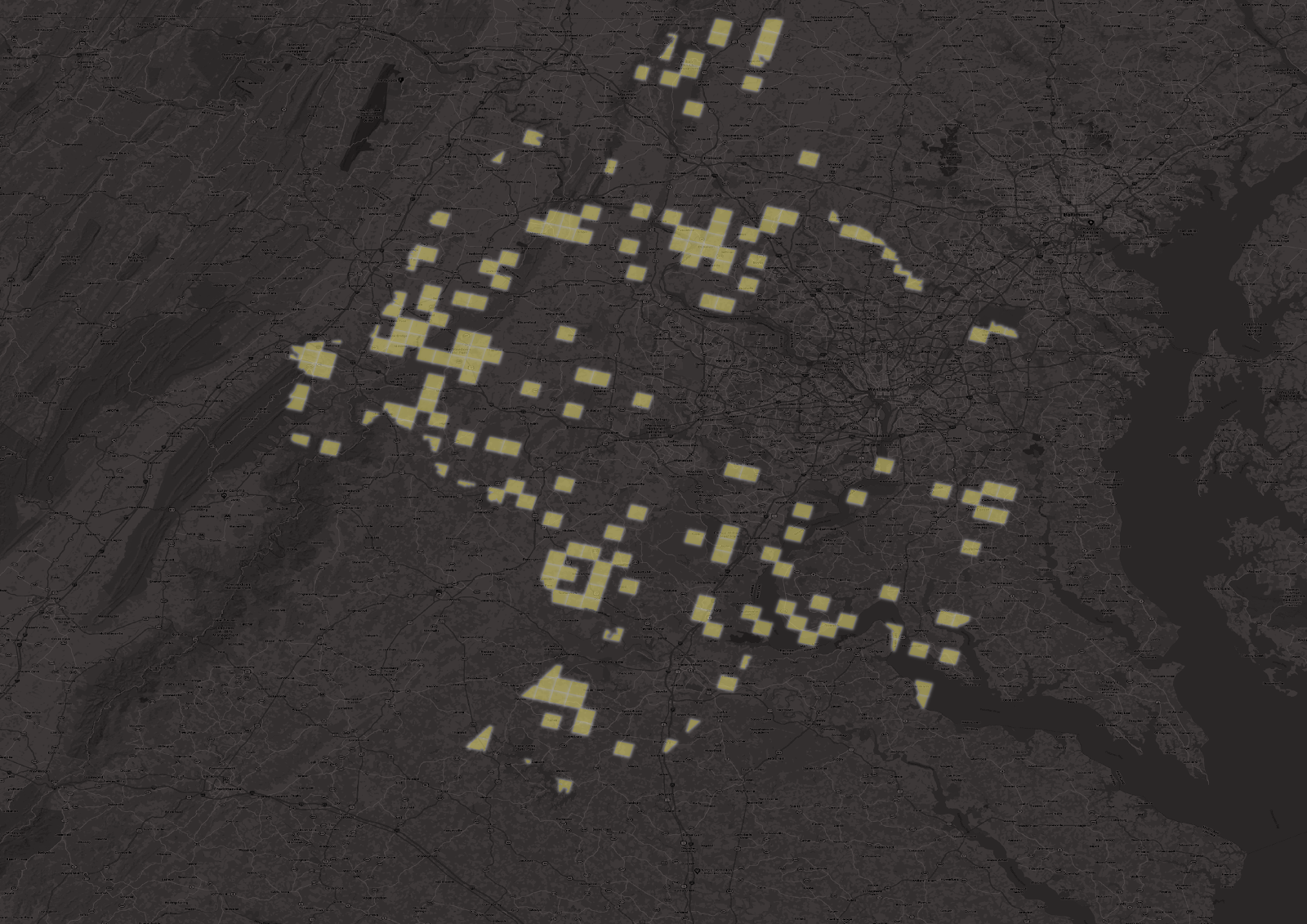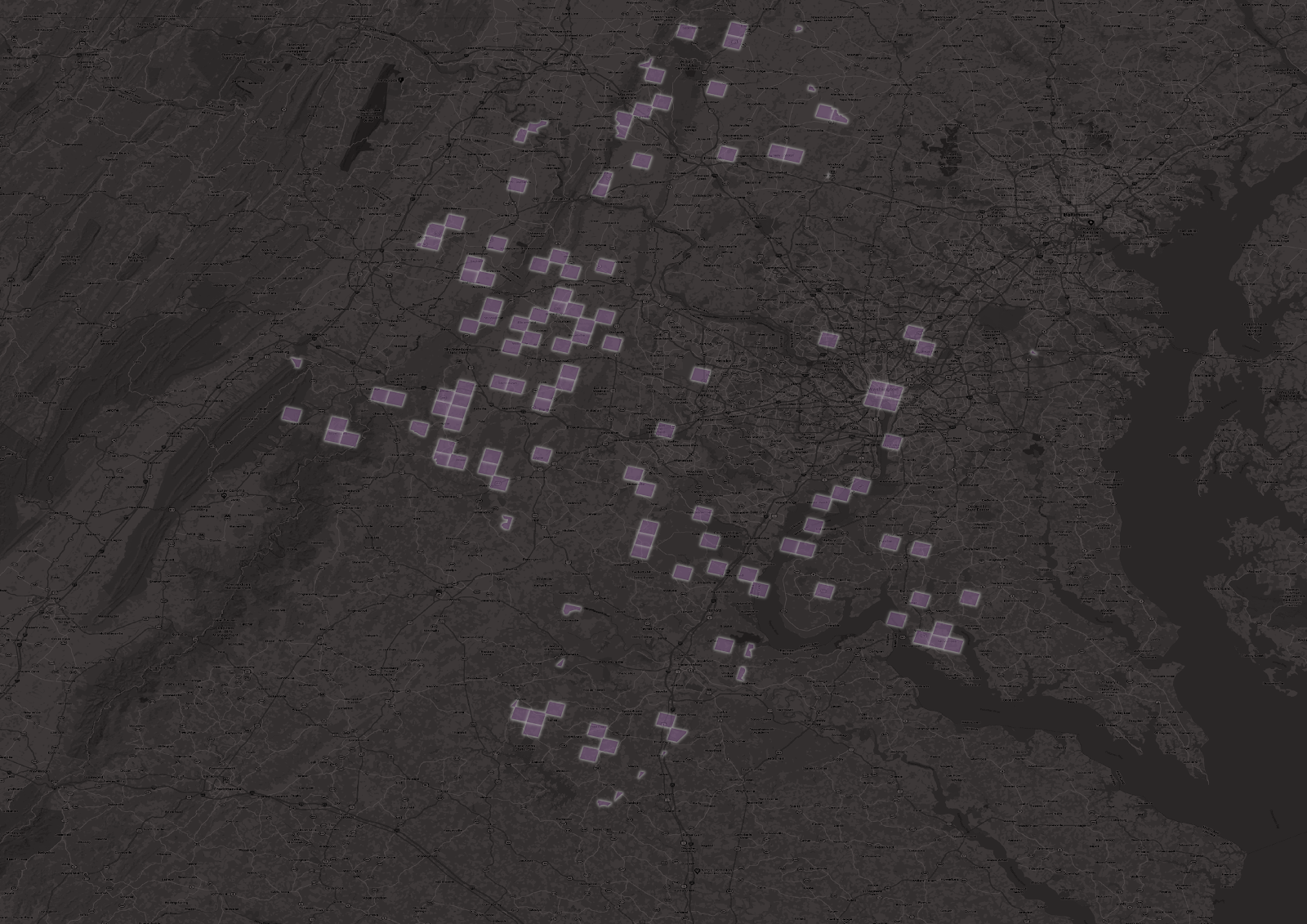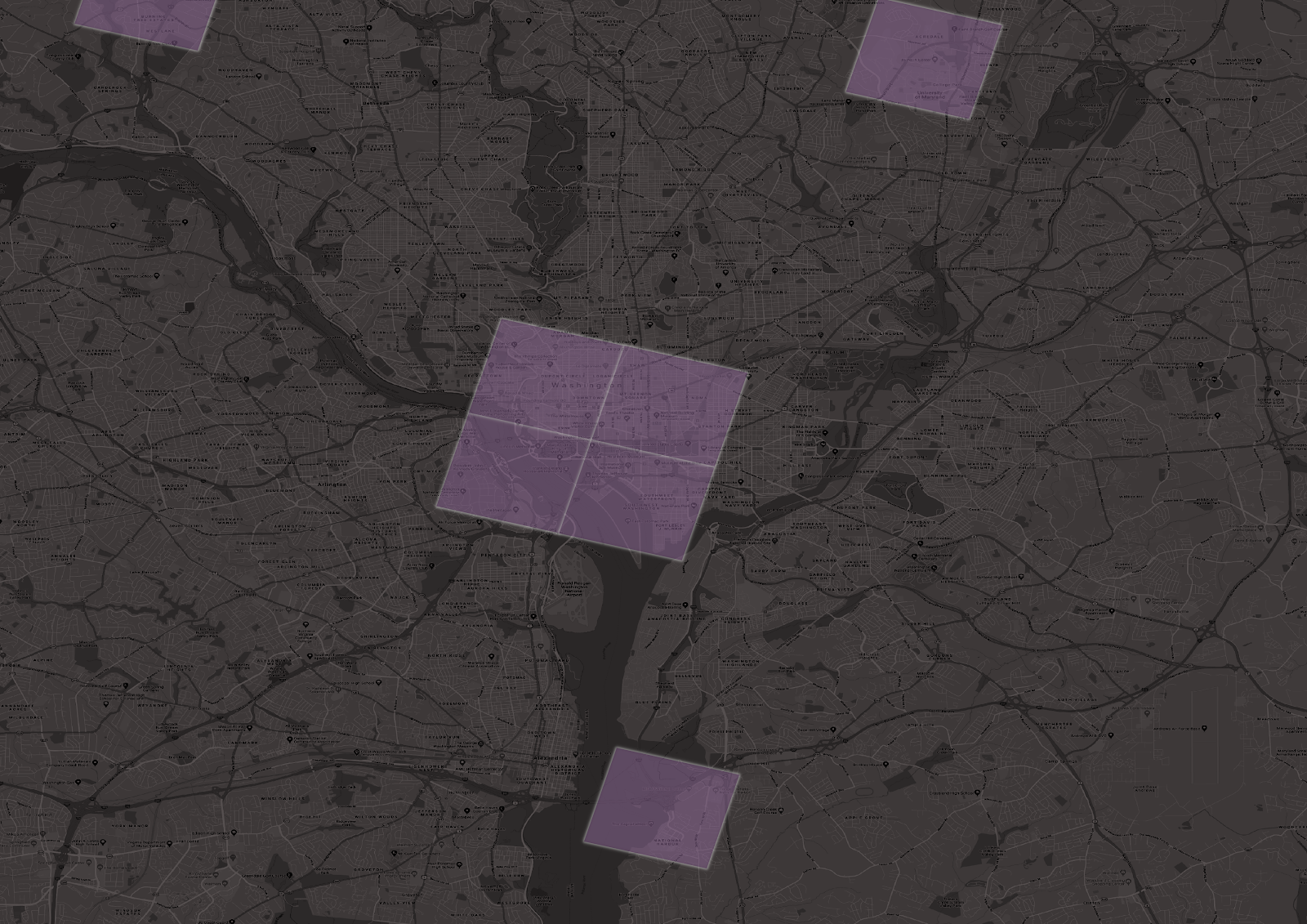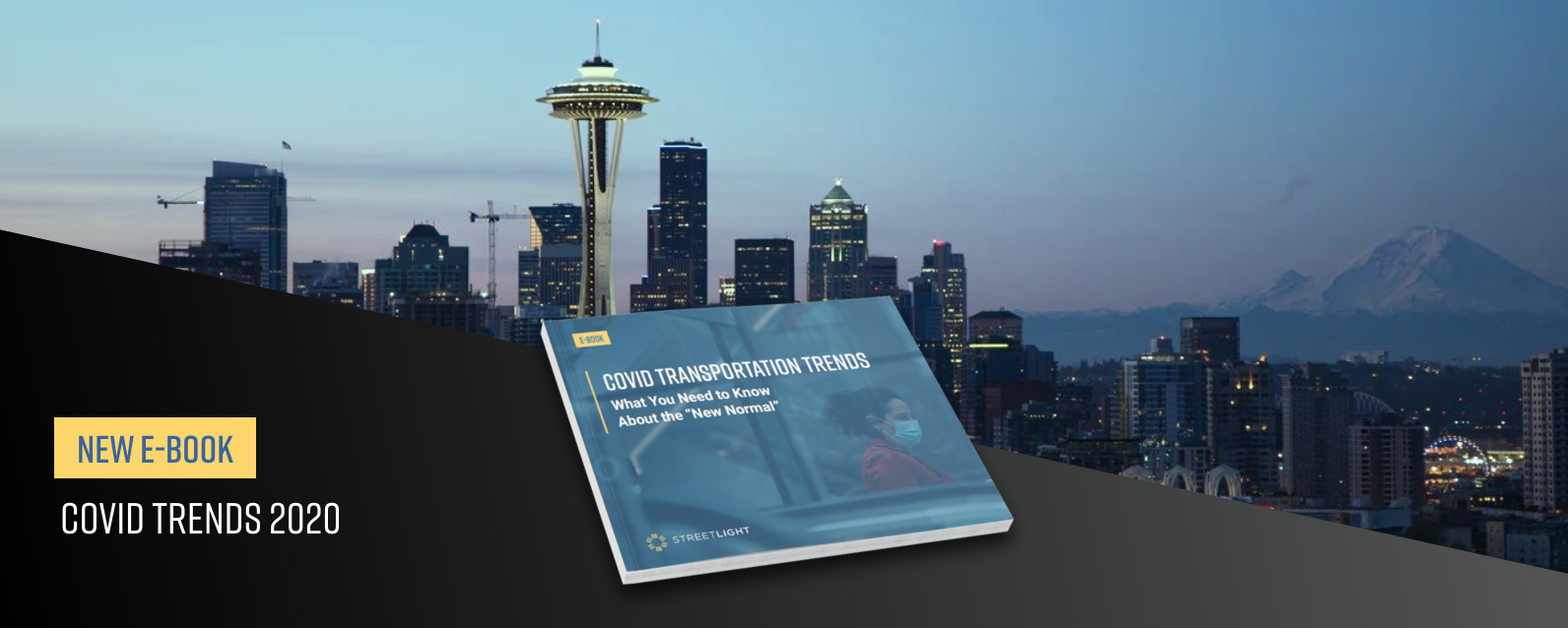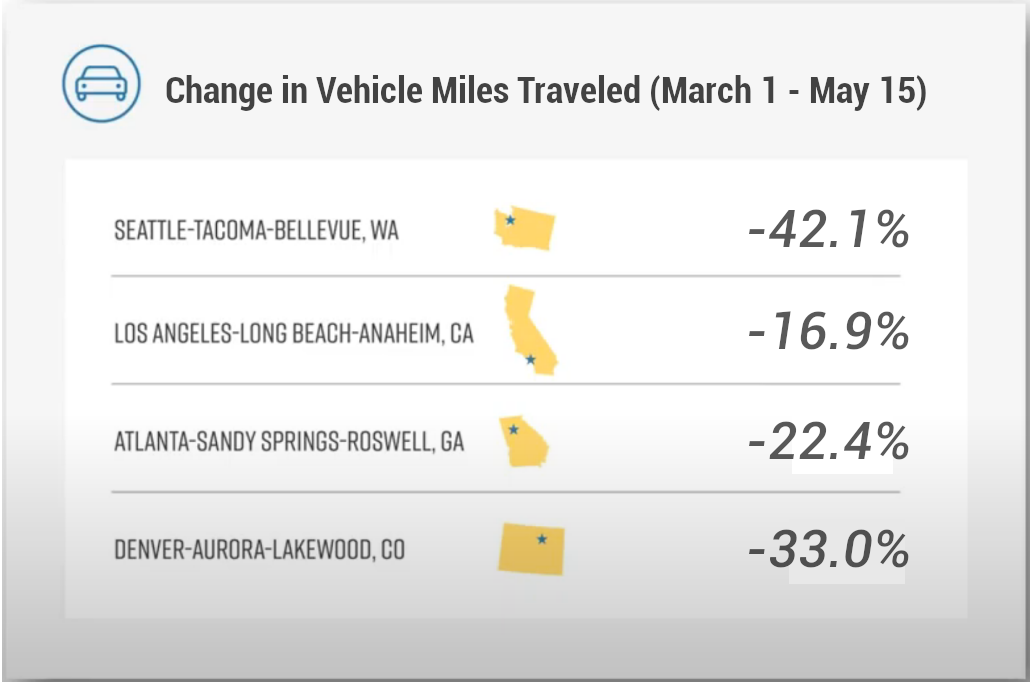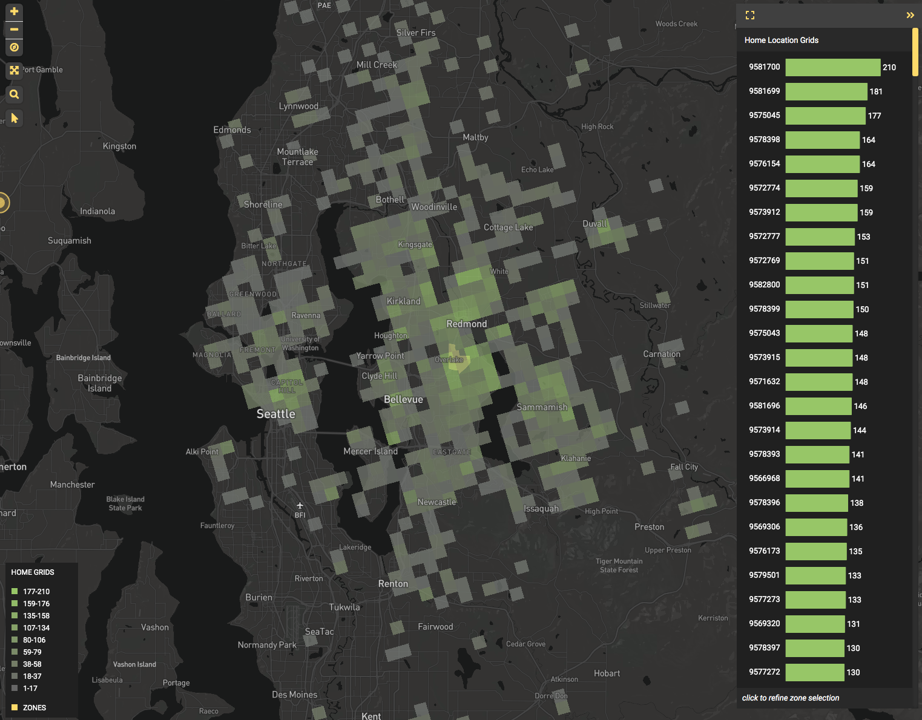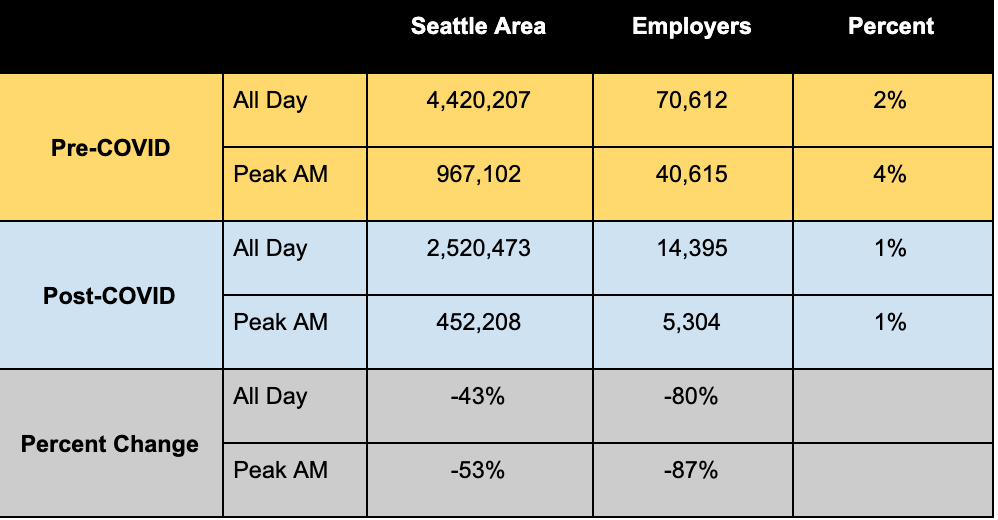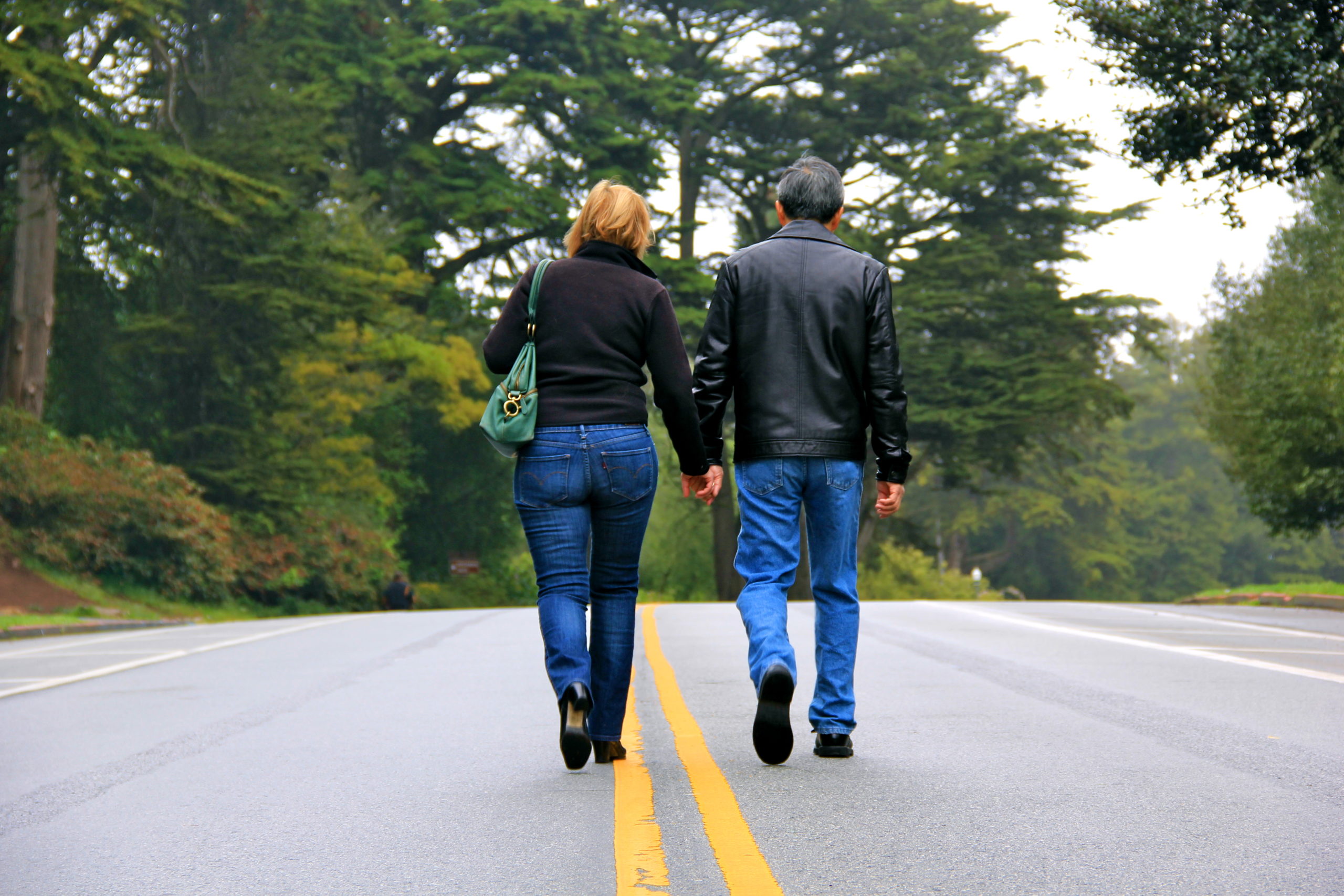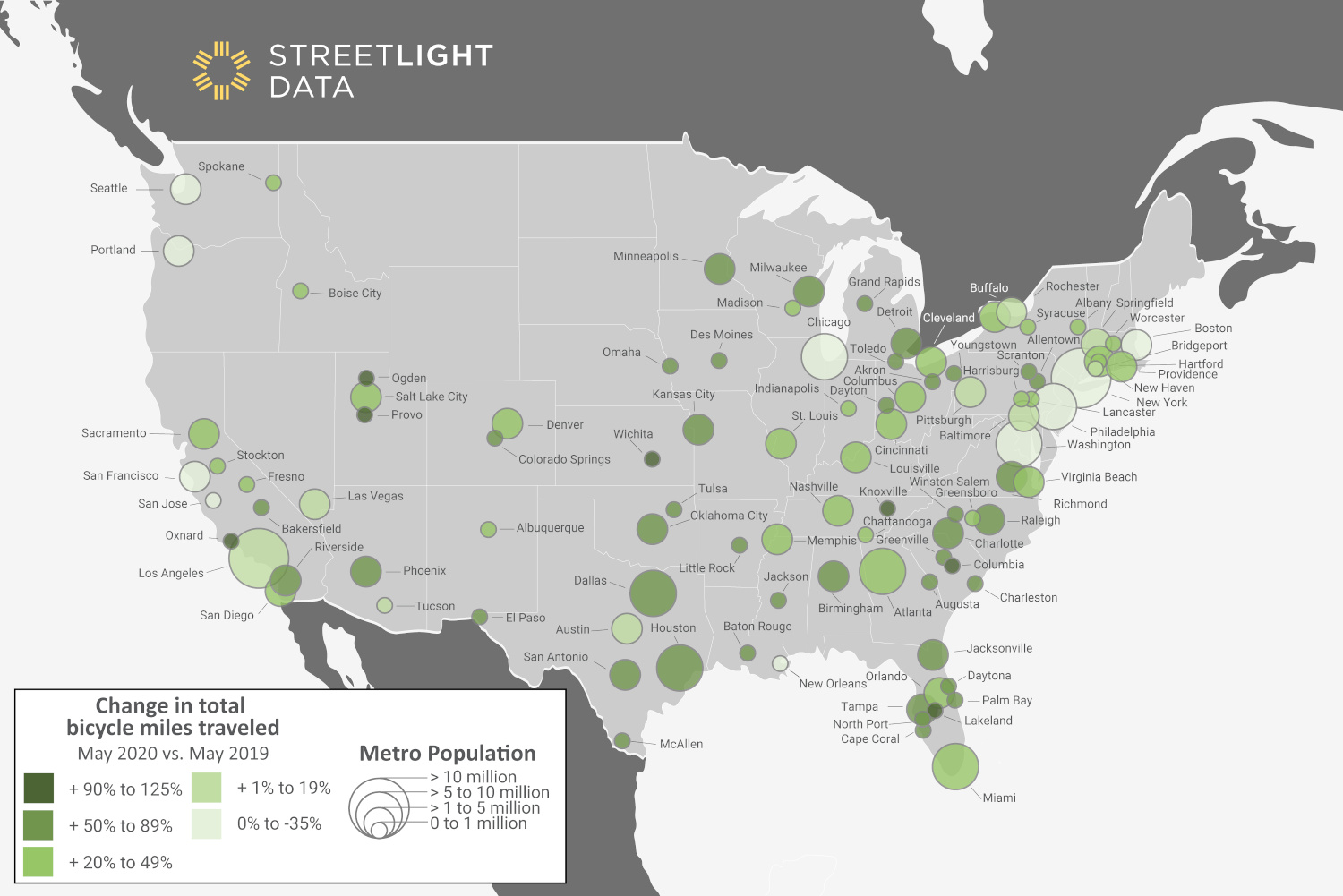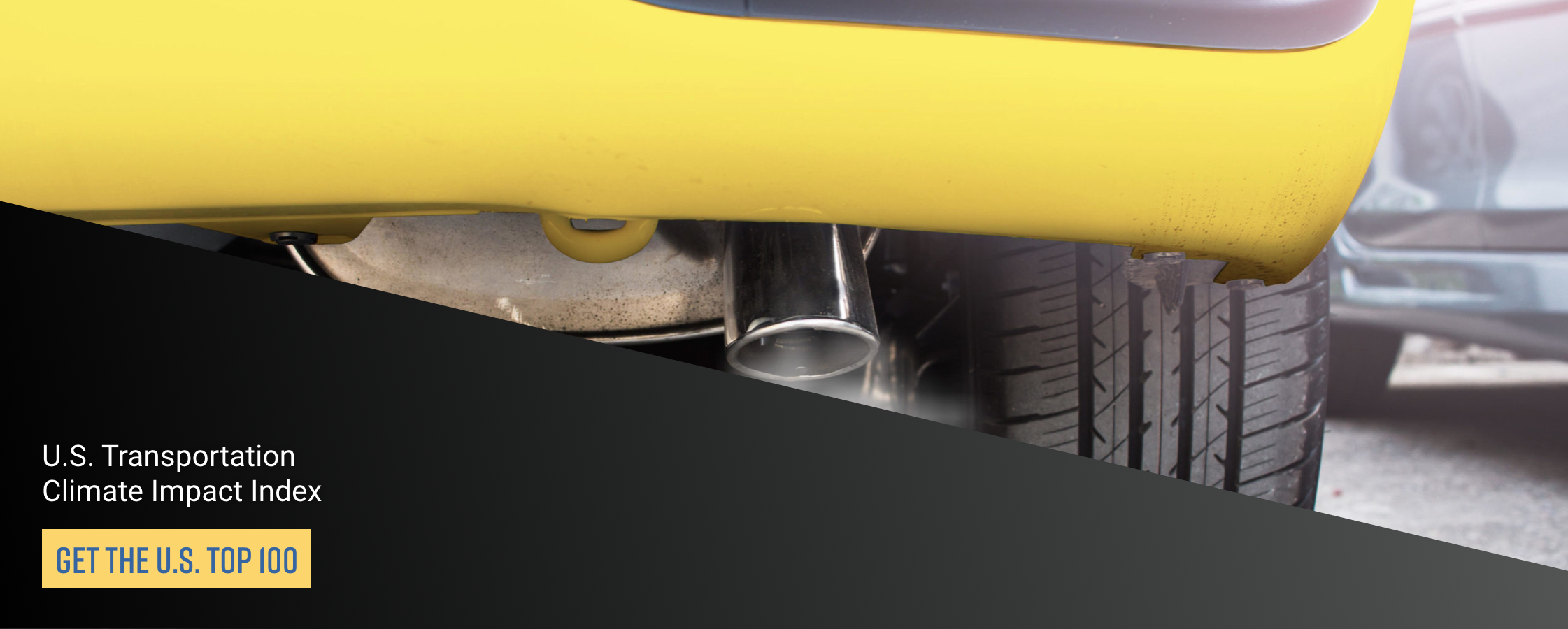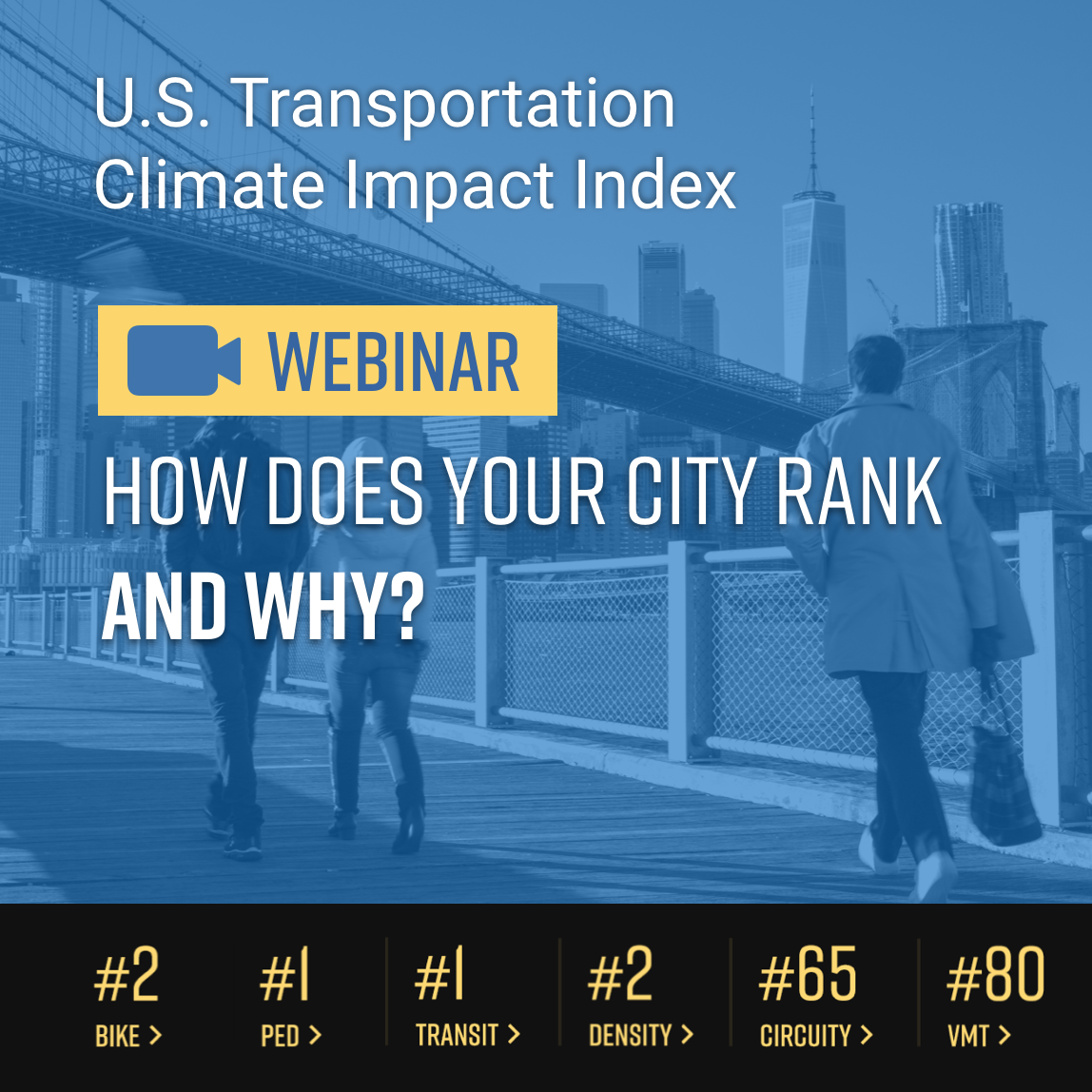Category: COVID-19 Response
Why Work-From-Home Didn’t Lower Climate Change Impact

Why Work-From-Home Didn’t Lower Climate Change Impact
Studying vehicle travel during 2020 provided many unique opportunities for transportation data analysis, thanks to reduced travel activity. At the beginning of the pandemic, transportation planners speculated that work-from-home policies might positively affect climate change by reducing emissions. It’s a tempting alternative to expensive and time-consuming infrastructure or policy changes.
This is the beauty of data – sometimes we have an expectation, or a hunch, or a guess, and data-backed insights can prove or disprove it. We analyzed VMT extensively in our 2020 U.S. Transportation Climate Impact Index, so let’s draw from that to take a deeper look at what WFH policies could actually mean for the climate change conversation moving forward.
Driving Miles Fell Dramatically in 2020
Initially, VMT fell to new lows as populations hunkered down in response to the virus reaching U.S. shores. By March, annual average VMT for the U.S. fell to 5.5 billion. The average for March the previous year was double, at 10.5 billion.
Figure 1: Although driving decreased in early spring of 2020, by the fall average VMT was back to normal levels.
The metro New York area witnessed such disruption in driving that it landed at our number 7 lowest VMT ranking in 2020, a dramatic difference from its 2019 ranking of 80. And while population shifts – including people leaving the city due to pandemic fears – may have contributed to the change, there’s no doubt that one of the largest U.S. cities did experience a huge decrease in commute driving.
Some transportation experts hoped that WFH policies could reduce transportation’s impact on climate change, and that we could explore ways to keep it permanently low. The pandemic’s drastic drop in commuting nationwide offered us a unique opportunity to analyze actual data.
Work-From-Home Isn’t Magic
The rise in remote work might suggest that transportation planners could embrace this option in addition to (or even instead of) regulation or infrastructure planning. Could solutions that change the structure of work have a lasting impact on transportation emissions? Let’s look at the analysis results.
- First, and obviously, not everyone can work from home. Our data indicates that only about 9% of typical household VMT comes from commuters who have the potential to work from home. The rest of the world (including essential workers and hourly shift workers) must commute to a specific work location. And most driving is non-commute travel anyway — people running errands or shopping.
Figure 2: Only 9% of household vehicle travel can be attributed to commutes for employees who could shift to work-from-home.
Second, WFH didn’t necessarily mean all workers were driving less. Many just may have been driving differently. Our analysis found a shift in peak driving hours, with a dip in morning driving but a slight rise and wider peak time for afternoon driving. Also, essential workers still commuted, and Census data showed a large increase in online retail, which created more delivery vehicle miles.
Figure 3: Comparing 2019 trends (yellow) to 2020 (blue) shows that while morning rush hour volume decreased, afternoon peaks spread.
- Third, WFH didn’t permanently reduce the amount of transportation. Although VMT dropped drastically in early spring, by August it already had begun to rise again. August and subsequent months looked much closer to previous 2019 levels, with over 12,000 VMT in August 2020, just like 2019.
Addressing Transportation’s Role in Climate Change Takes More
So what does this mean? WFH policies didn’t translate to permanent reductions in transportation vehicle emissions. That means we must develop other initiatives to support transportation climate policies.
Intentional restructuring after COVID is the only way to create lasting change. The pandemic forced everyone to rediscover what work looks like, and now we have an incredible opportunity to reinvent work and its related transportation needs. Keeping WFH policies while supporting low-carbon transportation modes and increasing vehicle efficiency can create the impactful change we seek.
Figure 4: Increasing vehicle efficiency has the biggest potential to mitigate transportation emissions.
It would be wonderful to solve climate change by increasing remote work, but transportation’s contribution to climate change is complex.
We were able to explore remote work’s role in climate change because of unprecedented events in 2020. The data can capture moments like that and allow transportation planners to build on the insights. Data can help us reimagine what our working world and its transportation needs can be. Summarized from “Private Versus Shared, Automated Electric Vehicles for U.S. Personal Mobility: Energy Use, Greenhouse Gas Emissions, Grid Integration, and Cost Impact” by Colin J. R. Sheppard, Alan T. Jenn, Jeffery B. Greenblatt, Gordon S. Bauer, and Brian F. Gerke, Environmental Science & Technology 55, no. 5 (March 2, 2021): 3229–39.
Where Did People Relocate During 2020’s Pandemic?

Where Did People Relocate During 2020’s Pandemic?
As we mark one whole year of living through the COVID pandemic, much has changed in our daily lives. There is significant interest in understanding changes to many of our regular behaviors, including how we work, learn, and shop. What will become permanent, and what will “return to normal”?
For example, much has been made about an “urban exodus” during the pandemic – people leaving cities for the more relaxed countryside. But is this true? If so, what does it mean for transportation?
At StreetLight Data, we use our transportation Metrics to answer questions like this every day. So I dug into our data repository to build a custom study for analyzing where people relocated during the pandemic’s peak.
Taking Transportation Data to the Next Level
Using StreetLight InSight®, our customers have the ability to determine whether trips to and from a particular geography are made by inferred “residents,” “workers,” or “visitors.” This data is available via a Home-Work Location add-on to a Zone Activity analysis.
Having said that, an in-depth relocation analysis like this isn’t programmed into our platform as a “ready” study that customers can do. But as a senior data engineer, I help customers with special projects every day. I know that our extensive database can reveal all kinds of insights if it’s queried in the right way.
This custom project was a unique opportunity for me to explore some of the outer reaches of what our transportation analytics platform can do.
Which Origin-Destination Pairs Showed the Biggest Change in 2020
First I wanted to understand where people relocated during the spring of 2020. I analyzed home location data for the top 10 most-populated metropolitan statistical areas (MSAs) to see where people moved when they left their original MSA.
The list below shows the Top 25 movement patterns in the spring of 2020 for people who lived in one of the 10 largest MSAs in the U.S. Note that this list shows the city pairs that took in a larger proportion of movers compared to 2019. It also excludes any intra-MSA movements. The Census Current Population Survey estimates that approximately 60% of all moves in a given year are within the same county.
For example, the most moves were from Los Angeles to San Bernardino during the pandemic. But Los Angeles residents are pretty continually moving to San Bernardino (it was the top relocation pair for 2019 as well). This list shows pairs that changed the most from 2019.
The top relocation pair of Miami to Orlando had the largest increase in move volume from 2019 to 2020. City O-D Pairs with Largest Increase in Relocations in 2020 compared to 2019*
- Miami-Fort Lauderdale-Pompano Beach, FL to Orlando-Kissimmee-Sanford, FL
- Phoenix-Mesa-Glendale, AZ to Chicago-Joliet-Naperville, IL-IN-WI
- New York-Northern New Jersey-Long Island, NY-NJ-PA to Miami-Fort Lauderdale-Pompano Beach, FL
- New York-Northern New Jersey-Long Island, NY-NJ-PA to East Stroudsburg, PA
- Los Angeles-Long Beach-Santa Ana, CA to Phoenix-Mesa-Glendale, AZ
- New York-Northern New Jersey-Long Island, NY-NJ-PA to Bridgeport-Stamford-Norwalk, CT
- New York-Northern New Jersey-Long Island, NY-NJ-PA to Poughkeepsie-Newburgh-Middletown, NY
- New York-Northern New Jersey-Long Island, NY-NJ-PA to Atlanta-Sandy Springs-Marietta, GA
- Miami-Fort Lauderdale-Pompano Beach, FL to Cape Coral-Fort Myers, FL
- Los Angeles-Long Beach-Santa Ana, CA to Bakersfield-Delano, CA
- New York-Northern New Jersey-Long Island, NY-NJ-PA to Dallas-Fort Worth-Arlington, TX
- Dallas-Fort Worth-Arlington, TX to San Antonio-New Braunfels, TX
- Atlanta-Sandy Springs-Marietta, GA to Jacksonville, FL
- Atlanta-Sandy Springs-Marietta, GA to Gainesville, GA
- New York-Northern New Jersey-Long Island, NY-NJ-PA to New Haven-Milford, CT
- Houston-Sugar Land-Baytown, TX to Huntsville, TX
- New York-Northern New Jersey-Long Island, NY-NJ-PA to Pittsburgh, PA
- Washington-Arlington-Alexandria, DC-VA-MD-WV to Hagerstown-Martinsburg, MD-WV
- New York-Northern New Jersey-Long Island, NY-NJ-PA to Boston-Cambridge-Quincy, MA-NH
- Philadelphia-Camden-Wilmington, PA-NJ-DE-MD to Ocean City, NJ
- Washington-Arlington-Alexandria, DC-VA-MD-WV to Miami-Fort Lauderdale-Pompano Beach, FL
- Los Angeles-Long Beach-Santa Ana, CA to Miami-Fort Lauderdale-Pompano Beach, FL
- Washington-Arlington-Alexandria, DC-VA-MD-WV to Tampa-St. Petersburg-Clearwater, FL
- Atlanta-Sandy Springs-Marietta, GA to Tampa-St. Petersburg-Clearwater, FL
- Miami-Fort Lauderdale-Pompano Beach, FL to Atlanta-Sandy Springs-Marietta, GA
*MSA ranked by highest increase in relocations in 2020 as compared to 2019
Density Loses Ground
Digging into an analysis of Census Block Groups showed me that, on average, when people moved from a given home area in March or April of 2020, they were much more likely than their 2019 counterparts to move to a less-dense area. Specifically, people who relocated during March and April of 2020 moved to areas that were from 22% to 33% less dense than their former residence. This is a stark contrast to the areas people moved to in March and April of 2019, which were just 1% and 2% less dense, respectively.
This finding is interesting because of the role population density plays in transportation’s impact on greenhouse gas emissions. Generally, the denser a city, the more efficiently its inhabitants can move around. People relocating to less-dense living areas can, for example, boost vehicle miles traveled in that area, and put more stress on the existing transportation network.
Figure 1: People relocating in 2020 were much more likely than those in 2019 to move to a less-dense area.
Moving Moves Back to Normal
The data both confirms and refutes those “urban exodus” reports. Yes, people did flee densely populated cities for less-dense ones early in the pandemic. That’s understandable when many of us were trying to avoid other humans, or expanding our yards for socially distanced outdoor entertaining.
But that trend ultimately didn’t continue or accelerate at that scale over time. Thus we expect the U.S. to see a modest increase in VMT due to less-dense localities, and are hopeful we will avoid a huge or accelerating spike in VMT when we return to “normal” due to many people moving to more sprawled areas. There are plenty of reasons VMT could spike, of course, we’re just less afraid of this particular reason now.
This is a relief! Of course, as our city pairs show, certain localities will see move-driven VMT increases or even decreases far afield from the national average.
Figure 3: Vehicle volume on the “beginner” 35-mile Pelotonia route.
For beginners, there are two routes that Pelotonia recommends – the 25- and 35-mile routes. I studied these routes to learn more about what vehicle traffic the riders are likely to encounter.
The 25-mile option, although shorter, is the first 25 miles out of Columbus. It therefore shares the road with a higher volume of cars than other routes, but they are traveling at slower speeds.
On the other hand, the 35-miler is a completely different route. The ride utilizes lower-volume roads, and also takes place on a Sunday. A Segment Analysis on this route shows very low weekend traffic and speeds mostly in the 30s and 40s. Pelotonia also mentions that the 35-mile route has less climbing.
Overall, it looks like the 35-mile option may be the safer route for beginning riders uncomfortable with sharing roads with vehicles. Less time on the roads doesn’t always mean less risk for cyclists.
2020: The Transportation Year in Review

2020: The Transportation Year in Review
As 2020 ends, we are astonished at what our customers—agencies, consulting firms, and private companies—were able to accomplish this year. From “business as usual” planning to measuring COVID-19’s effects on transportation, here are some examples of the great work we were able to support in 2020:
- In the spring, planners scrambled to capture key transportation metrics during an unprecedented time of travel shutdown.
- Individual states, regions, and cities began to analyze (and predict) transportation shifts.
- As the pandemic stretched into summer, analysts tracked travel slowdowns and surges, region by region.
- Cities like Seattle saw substantial transportation impact from work-from-home policies.
- When Golden Gate Park visitorship skyrocketed during the pandemic, park management was able to quantify the numbers for their leadership.
- The New York Times, Brookings, and Bloomberg reported on increased bicycle travel and the pandemic’s urban flight.
- In October, hundreds of transportation managers and planners gathered virtually at our annual StreetLight Summit to discuss transportation budget concerns and other ongoing projects and issues.
- Nearly 50,000 people accessed our free VMT Monitor to track their county’s daily fluctuations in vehicle miles traveled.
No one knows what obstacles await in 2021, but we will continue to provide the metrics to measure your biggest transportation problems—and more importantly, solve them.
Figure 2: Hourly VMT analysis for the Los Angeles MSA.
How Sharing Data Can Extend the Value of Your Agency Budget

How Sharing Data Can Extend the Value of Your Agency Budget
With uncertain budgets for 2021, transportation agencies must increasingly squeeze value from every dollar they spend. We talked with Nick Lepp, director of Transportation Planning at MetroPlan Orlando, about how his team leverages their investment in Big Data analytics by sharing it with other agencies.
What does MetroPlan Orlando do with Big Data?
We purchased a StreetLight subscription to help us develop a different kind of transportation model. We wanted to look more at accessibility instead of traditional transportation demand management that just focuses on cars.
We are shifting toward establishing more programs for multimodal transportation versus road widening and other car-focused initiatives. Our vision has grown to incorporate metrics that include health access. That’s how we identify and prioritize projects and areas that we focus on now.
How did the health department get involved?
This started before I even got here. Our former executive director was interested in health and transportation planning, and how transportation can help the health of the community.
He began the conversation with different types of agencies, starting with the county health department. That broadened into other private health agencies, including hospitals, and then the American Heart Association.
Our data educated them on how transportation can contribute, and what we need in a transportation plan to support improved health.
We contribute by giving planners and officials a transportation lens. Our officials have a lot of concerns about access to good healthcare, and maintaining it, which can be a problem if you don’t have good access to transportation.
How does intra-agency data-sharing work, in practice?
We started sharing our models with local health departments to identify areas of concern for access to food and other essential services. This is particularly important for populations living in food deserts.
Now we also share the same transportation data with local agencies for land use issues. We are identifying areas with transportation and access concerns getting to healthy food, doctors, parks, and other essential services.
We are building a better overall idea of where transportation can work to improve health – for example, sidewalk applications that might improve access in a certain area.
What’s an example of relevant data you share with other agencies?
We actually had an “aha” moment just this morning. We found that only about 25% of our population has biking and walking access to an essential service. That means most people would have to have a car to reach those essential services.
Another example is in analyzing food deserts and access to food. We were able to remove fast-food restaurants from the study area because they don’t really promote healthy eating.
It’s validating to be able to put our money where our mouth is. When we can say that only 25% of our population has non-vehicle access, it’s more concrete than something anecdotal like, “If we put in sidewalks and bike paths, it will improve the community.”
It sounds like the data starts to spill over into land use – is that right?
That’s right. Improving access can’t be done just through transportation investments, because we are running out of space. We’ll be working together with land use and health agencies to try to get those services there.
Big Data gives us actual information on trip-making characteristics, where in the past we’ve only had forecast models. Now we can say that we have a certain trip length in a certain area, and if we extend infrastructure, then residents can go farther. We can identify which zone has to travel great distances to a service. More mixed use would shorten the number of trips and reduce traffic by providing closer access.
In fact, I’m hoping that sharing data like this will strengthen the connection between land use and transportation overall. There has always been a gap there, and I’m hoping data can help agencies bridge that.
Has this enhanced your agency’s overall value?
It has opened doors, for sure. We are involved in a lot more local government projects because they say, “Hey, you have this data.” It’s great because now we sit at the table, and we can hear the conversations.
Surprising Changes to Traffic Congestion in Urban Areas

Surprising Changes to Traffic Congestion in Urban Areas
Analyzing travel in major metropolitan areas throughout the U.S. shows surprising new patterns that only a granular analysis can decipher. Specifically, the data shows that while total miles driven are similar to February 2020, big changes have arisen in when and where trips occur in metropolitan areas.
Essentially, we see the same vehicle miles travelled (VMT) in metro areas, but without the same level of congestion, and in new locations. This decoupling of VMT and urban-area congestion shakes many of the foundations of our models and decision tools about transportation infrastructure, investment, funding, mode choice, and more.
Significant Shift in Rush-Hour Trips
In the past, when we have looked at trips by time of day (especially weekday trips), we have always seen a “bi-modal” trip distribution. These are our traditional peak AM and peak PM periods, coinciding with commuting to and from work for many employees.
Now, when we examine the hourly distribution of VMT in metro areas, we see a “smoothing” of peak AM travel time during what has traditionally been the morning commute period. These trips are shifting (or being replaced) with more trips happening during the midday hours.
For five separate MSAs, we looked at the distribution of VMT by time of day for average weekdays in June 2019 and January 2020 (pre-COVID), compared to June 2020 (post-COVID). In all cases, we see the bi-modal peaks in the pre-COVID periods, as well as the reduction of the morning commute peak in the post-COVID period across all five MSAs.
We still see peak PM travel behavior, along with more VMT in the afternoon than before.
Figure 1: Hourly VMT analysis for the Chicago MSA.
Figure 2: Hourly VMT analysis for the Los Angeles MSA.
Figure 3: Hourly VMT analysis for the New York MSA.
Figure 4: Hourly VMT analysis for the San Francisco MSA.
Figure 5: Hourly VMT analysis for the Washington, D.C. MSA.
Decentralized Urban Travel
When we examine where post-COVID trips originate, we see a decrease in metro area trips in city centers, and an increase in trips farther away from the traditional downtown/core urban areas.
Highlighting the Chicago and Washington, D.C. MSAs at a granular spatial level, we found that the areas with the largest decrease in trips between 2019 and 2020 were in the core urban/downtown/central business districts of the MSAs. Areas in the less densely populated outer regions of the MSAs saw actual increases in trips, year over year.
In the image below, we have plotted the percent change in trip starts throughout the Chicago MSAs, in 3km grids. The darker the shading, the higher the percent decrease in trip starts. The light-yellow represents increases in trip starts in June 2020 compared to June 2019.
Figure 6: Overview of change in trip starts from June 2019 to June 2020 for the Chicago MSA.
When we plot just the grids where trip starts have increased year over year, we see there is a large concentration of this activity in the outer regions of the Chicago MSA.
Figure 7: Chicago areas with trip increases from June 2019 to June 2020.
Conversely, when we plot the areas with the largest percent decreases in trip starts, we see locations closer to Chicago’s urban core.
Figure 8: Chicago areas with the largest trip decreases from June 2019 to June 2020.
When we zoom in on Chicago’s urban core, we see it is included.
Figure 9: The Chicago MSA urban core shows significant decreases in trip activity from June 2019 to June 2020.
When we examine the Washington, D.C. area, we see a similar pattern as well.
Figure 10: Overview of change in trip starts from June 2019 to June 2020 for the Washington, D.C. MSA.
Figure 11: Washington, D.C. areas with trip increases from June 2019 to June 2020.
Figure 12: Washington, D.C. areas with largest trip decreases from June 2019 to June 2020.
Figure 13: The Washington, D.C. MSA urban core shows significant decreases in trip activity from June 2019 to June 2020.
Monitoring Future Changes
Transportation models have relied on assumptions about established time-of-day trip patterns, but these patterns are changing. It is extremely important to monitor travel patterns and behaviors during these times — and to dig deeper with hourly and location-specific metrics. Even when our quarantines and work-from-home requirements relax, it’s possible that some of these behavior shifts will stick. Understanding the new and emerging behaviors will help transportation professionals plan for the future in a more effective manner.
How Work-From-Home Affects 2020’s Vehicle Miles Traveled Statistics

How Work-From-Home Affects 2020’s Vehicle Miles Traveled Statistics
Although most statewide pandemic-related stay-home orders have been lifted or reduced, many organizations have announced that they will continue work-from-home policies through at least the end of the year, and perhaps into 2021. How will this affect your agency and locality?
We’ve noted many benefits of stay-home policies, such as safer streets for bicyclists and pedestrians, reduced noise, congestion, and air pollution. But we’ve also seen a major drawback: For some government agencies, fewer vehicle miles traveled (VMT) means less gas-tax-related funding.
We turned to Big Data to better understand how work-from-home policies impact VMT. Here, we share how planners can identify, monitor, and predict commuting travel fluctuations in order to estimate the impact on VMT.
VMT Monitor Reveals Ongoing Fluctuations
Many U.S. cities have experienced significant decreases in VMT since the pandemic started. We have been tracking these changes by using the StreetLight VMT Monitor, which provides county-by-county VMT measurements for each day since the COVID-19 crisis began, as well as a change from the baseline. We saw a 25% average drop in VMT nationwide from March 1st to May 15th, when most cities had stay-home orders in place.
We know intuitively that total VMT reduction during the pandemic can be attributed not just to work-from-home, but also school closures and less travel to run errands. But since employers announce work-from-home policies, that traffic is a somewhat known entity that agencies can predict and plan for (unlike errand travel), and provides a helpful metric for planners.
Seattle Study: Top Employers Driving Traffic
We delved into Seattle’s traffic fluctuations because the Seattle area has four major companies (Amazon, Microsoft, Boeing, and REI Co-Op) that employ over 150,000 people in Seattle. Together, that’s more than 6% of greater Seattle’s working population. We hypothesized that commuting patterns for these major employers would heavily impact Seattle-area VMT.
Measuring commuting for these four companies normally would have required fielding a survey or placing sensors at the business entries — both difficult and expensive during the best of times, but particularly problematic during a pandemic.
Instead, we used StreetLight InSight® for three analyses that gave us data before and after COVID work-from-home policies:
- Top Routes
- Zone Activity
- Zone Activity with Home/Work Location.
The Top Routes and Zone Activity analyses allowed us to visualize the road segments with the most traffic to and from these employment centers, then measure the trip volumes along these segments.
The Home/Work Location feature allowed us to identify and aggregate where employees live and work. The inferred home locations are clustered into 1 km by 1 km grids, and thus protect the identity of individuals.
These analyses provide additional Metrics which we did not use for this study, including trip distance and traveler demographics (age, income, race, and more).
Figure 1: A pre-COVID Zone Activity analysis of Microsoft’s Seattle headquarters shows inferred, aggregated home locations for peak AM commuters.
How Much Seattle Traffic Comes From Commuting?
Our initial hypothesis turned out to be correct — a large percentage of Seattle’s VMT came from commuters working at one of the area’s four largest companies.
The analysis showed that pre-COVID, 4,420,207 daily trips on average were made in Seattle, and 967,102 of those trips were made during peak AM hours. Of those peak AM trips, 40,615 trips were made by Amazon, Microsoft, Boeing, and REI employees traveling from home to work.
In typical conditions, that’s 2% of Seattle’s total daily trips, and 4% of all trips during peak AM hours. Post-COVID, these home-to-work trips only represented 1% of trips made during peak AM hours. That’s a sizable impact.
Figure 2: Changes in Seattle-area commuting trip volume for major employers (Amazon, Microsoft, Boeing, and REI).
With these trip volume results we can calculate VMT, and the subsequent impact on Seattle when these four major employers continue (or change) work-at-home policies.
Predicting Work-From-Home’s Effect on VMT
During peak stay-home orders, Seattle experienced a 42% decrease in overall VMT, but across the four large employers commute trips decreased by 80-90%. An interesting note: As the only manufacturing business, Boeing’s traffic decreased least of the four — this correlates with essential employees continuing to work during the pandemic.
We can see that employer commute trips in Seattle during the summer represented a disproportionate share of COVID travel decline. Although residents were still travelling (at 42% of normal VMT) not as many were commuting. Therefore, the travel that exists is being generated otherwise.
Rising VMT despite continuing work-from-home policies indicates that trip purpose is continuing to shift. This finding invites additional analysis: For example, planners may want to understand if different roads are being used, and apply resources to the appropriate routes.
While we may understand some of the short-term ramifications of the pandemic on VMT, it’s also important to plan for its long-term effects. Using Big Data analyses, planners can stay current on travel trends to respond to travel fluctuations.
Park Management: Data Captures Increased Visits to Secure More Resources

Park Management: Data Captures Increased Visits to Secure More Resources
At StreetLight we’ve noticed that it’s an exciting time for park managers, with increased usage of outdoor spaces and demand for additional resources. We talked with Taylor Emerson, Manager of Strategic Planning for the San Francisco Recreation and Park Department, about how she is using data to advocate for her park system.
StreetLight: What are you responsible for at the park?
Emerson: I do strategic planning, data analysis, and metric management for a system with more than 220 parks, the largest being Golden Gate Park. What that means is that, like all park managers, I am committed to making parks more accessible to more people. That’s the mission deep in the heart of every park manager.
How have your parks been affected by the pandemic?
San Francisco is operating under a Federal FEMA structure called the National Incident Command System. We act as one city, with one command center downtown telling us what they need.
Our city has responded quickly to the increased pressures on outdoor spaces. We have created spaces in our parks for food pantries, emergency childcare for healthcare workers, COVID testing sites, and remote learning support areas. And it’s not just parks, the city has also converted public spaces like parking spots into new spaces for outdoor dining, and created slow streets for more access to outdoor play space.
How have these changes affected park visitorship?
For Golden Gate Park, our data shows a 600% increase in park visits during the pandemic. Obviously a lot of new users are coming to our parks, and we have been so excited to embrace this silver lining of COVID. It goes back to our heartfelt goal — we want more people to enjoy our beautiful parks.
Normally we’d only know from anecdotes that our visitorship had increased, like staff saying that Mondays seem busier than usual. But the exciting thing is that we’ve been using StreetLight to capture actual data about park visits.
A couple enjoys strolling down the middle of John F Kennedy Blvd, in Golden Gate Park. The street closed as part of a recent Health Order to provide more outdoor open space for recreation. Download the full Golden Gate Park case study by clicking here.
What kind of visit data are you capturing?
When I came to the department in 2011, our website said that 13 million people visit Golden Gate Park each year, but nobody could remember where that number came from.
So we started to install counters for measuring visits. But Golden Gate Park has about 17 distinct entrances, and no perimeter fence, so they can only capture so much.
Fast forward to StreetLight, a tool that allows us to go back in time to capture baseline annual visit numbers no matter where they enter the park. It turned out to be 24 million visits, not 13 million people.
StreetLight brings so much more context and detail than just how many visitors are in the park that day. A number has much more meaning when you can compare it to that day the prior year, for example, or last month. You need context to tell a story.
What’s an example of a “story” the data has told you about the parks?
One finding was incredibly powerful. Using StreetLight’s Origin-Destination Metric, we analyzed Golden Gate Park’s 10 busiest entrances. The shocking finding was that at the busiest entrance, 85% of vehicles did not have a park purpose. They are using the park as a cut-through.
We’ve long wanted to close to traffic because parks are for people, not cars. This data supported it, so that’s the road we closed. Now someone can go basically from the middle of town all the way to the beach on a slow, safe street. We see people riding bikes, scootering, walking, even hoverboards. With street closures there’s so much more safe space for visitors to use our parks.
These ideas have been close to our heart for a long time, but now with data backing them we can put them out front.
The increase in visitorship must come with some challenges, how does data help?
Well, I can tell you there are a lot more trash issues! More people are coming, bringing picnics, and most want to leave their waste on site. We also need more custodial care for bathroom cleaning.
Using data, we’ve been able to redirect resources quickly to accommodate these new usage patterns. San Francisco has a park-loving mayoral administration that’s very responsive to the data we’ve shared, and that has helped us work through the bureaucracy to expedite resources.
What’s next for San Francisco’s parks?
In a post-COVID world I really look forward to being able to show that all these new users are still coming. We are investing more in the park right now and it would be great to show the long term benefits.
Comparing the present to the past is one of the most powerful things StreetLight gives us. We can show that an investment worked, that our money was well spent. If you don’t have data, what do you have? Only guesses and memories.
A report with pictures of families walking in the park isn’t going to cut it anymore, and that’s what we used to rely on all the time. Now my reports have pictures and numbers that are verifiable. Data can power advocacy in a way pictures alone just can’t.
The full Capturing Visitor Patterns for Golden Gate Park case study can be downloaded by clicking here.
6 Tips for Adapting Your Transportation Planning Amid Increased Uncertainty

6 Tips for Adapting Your Transportation Planning Amid Increased Uncertainty
Transportation planning has gotten even more unpredictable in 2020. Sure, we were already dealing with the unknowns of autonomous vehicles, micromobility, and more, but at least those were exciting, innovative trends. Now we’re just stuck in a land of existential short-term pandemic fog.
When will VMT return to normal? What will our budgets be for 2021? Will people go back to transit? What will congestion do? Nobody knows.
The new economic reality means that many agencies can’t even plan their budgets. Planners still have a desired future, now we must figure out how to chart that path with so many factors outside our control.
Balancing Short and Long Term Plans
Over the course of nearly 20 years working as a transportation planner for the Mid-America Regional Council in Kansas City, my colleagues and I became accustomed to dealing with crises and uncertainty related to funding – -reauthorization of federal transportation programs, national economic recessions, failed state and local ballot initiatives, you name it! While these were painful at the time, they taught me a lot about how to navigate short-term obstacles while maintaining a focus on long-term goals. If I were still working at a transportation agency, here’s what I would be studying, and how I would be setting myself up for both short- and long-term flexibility.
- Understand what has and what hasn’t changed. We know that on an aggregate level travel has decreased during the pandemic, but where and by how much? Analyzing average daily traffic (ADT) road by road reveals nuances that can inform project prioritization. For example, some roads may have lighter loads but others may have actually increased. There are still corridor needs out there, and you need to know where they are.
- Prioritize projects effectively. Now is the time to decide which projects should proceed and which should go on hold. Make data-based decisions based on accurate and current information, not last year’s (or even last month’s) metrics so that you can move quickly and effectively if budgets suddenly grow or shrink.
- Run as many scenarios as possible. If you have the resources, consider running multiple scenarios for existing plans. Scenario planning accounts for uncertainty in the planning process, and leads to better informed decisions by stakeholders. The more scenarios you have in place, the better your forecasting, and the more flexible your plan can be. This is where a subscription to a big data platform like StreetLight can really help since you can run endless analyses for one annual price.
- Keep your eye on long term goals. It’s easy to get distracted by short-term challenges, but the goals you set pre-pandemic are still important. Of course, those plans were developed under certain assumptions, and at some point you will have to go back and test those assumptions. Start thinking about the metrics you’ll need for re-evaluating them.
- Support workers and commutes to help resuscitate the economy. Transportation planners alone can’t help people afford a new car, or work from home. But we can study people’s travel, and optimize for it. Identify your region’s essential workers, and understand their travel patterns using current information, not yesterday’s data. Are those movements changing during the current situation, and if so, how? You may find low-cost operational changes that can improve mobility, like tweaking bus timetables or routes.
- Monitor mobility to enhance quality of life during the pandemic. People are clearly spending more time outdoors. Help local parks understand the frequency and number of visitors so they can adequately allocate resources, or identify areas with high levels of cycling and pedestrian activity for potential safe or slow streets programs.
Data to Fuel Quick Pivots
Here’s the good news: We now know what happens in an economic downturn. Instead of running modeled scenarios and guessing what happens, we actually have empirical data.
Because scenarios are shifting so quickly, we need to work with real, updated metrics instead of “typical conditions,” or last year’s data, or outdated models.
I believe that data is our way forward. To get through 2020, we need to get comfortable with a new level of uncertainty. But with a wider range of real data available, we can get the answers we need to pivot even more quickly.
Corona Bicycle Metrics: Where Bicycling Increased and (Surprise!) Decreased

Corona Bicycle Metrics: Where Bicycling Increased and (Surprise!) Decreased
Bike shops sold out quickly, and cyclists seemed to be everywhere during May’s widespread stay-home orders. But were Americans actually cycling more? Our analysis provides cycling facts instead of anecdotes about cycling during COVID. And some of the results surprised us.
To understand the shifts in cycling behavior beyond the anecdotal headlines, we used our bicycle Metric from StreetLight InSight®. We’ve just released updated data through May of 2020 to enable these sorts of trend analyses.
Our takeaway: In the new pandemic mobility framework, biking is a more important travel option than driving.
Mapping the Peak Corona Bicycling Metrics
We broke the country into Census Bureau Statistical Areas (CBSAs). We analyzed the number of bicycle miles travelled (BMT) starting in each CBSA for March, April, and May 2019 and 2020. We compared each pair of months (March 2019 to March 2020, etc) to understand how things have changed at a granular level. We focused on May, since May 2020 saw the largest concentration of stay-home orders, and grouped each outcome into one of five categories:
- Massive increase (90%+ ~Double the previous year’s BMT)
- Large increase (50-89% increase compared previous year’s BMT)
- Some increase (20-49% increase compared to previous year’s BMT)
- Slight increase (1-19% increase compared to previous year’s BMT)
- Some decrease (0-33% decreased compared to previous year’s BMT)
Bike shops sold out quickly, and cyclists seemed to be everywhere during May’s widespread stay-home orders. But were Americans actually cycling more? Our analysis provides cycling facts instead of anecdotes about cycling during COVID. And some of the results surprised us.
To understand the shifts in cycling behavior beyond the anecdotal headlines, we used our bicycle Metric from StreetLight InSight®. We’ve just released updated data through May of 2020 to enable these sorts of trend analyses.
Our takeaway: In the new pandemic mobility framework, biking is a more important travel option than driving.
Mapping the Peak Corona Bicycling Metrics
We broke the country into Census Bureau Statistical Areas (CBSAs). We analyzed the number of bicycle miles travelled (BMT) starting in each CBSA for March, April, and May 2019 and 2020. We compared each pair of months (March 2019 to March 2020, etc) to understand how things have changed at a granular level. We focused on May, since May 2020 saw the largest concentration of stay-home orders, and grouped each outcome into one of five categories:
- Massive increase (90%+ ~Double the previous year’s BMT)
- Large increase (50-89% increase compared previous year’s BMT)
- Some increase (20-49% increase compared to previous year’s BMT)
- Slight increase (1-19% increase compared to previous year’s BMT)
- Some decrease (0-33% decreased compared to previous year’s BMT)
Figure 1: Comparing May 2019 to May 2020 revealed some surprises in bicycling activity. While many smaller metro areas nearly doubled in bicycle trips, several major metro areas known for bicycle commuting actually dropped.
Cycling Doubled in Metro Areas Not Known for Bike Commuting
We saw this massive increase in cities including Ogden (UT), Lakeland, (FL), Knoxville (TN), Columbia (SC) and Provo (UT) and Oxnard (CA). These are cities not ranked highly for commuter cycling, according to our 2020 U.S. Transportation Climate Impact Index.
Why did these areas have the sharpest increase? We know these cities are popular areas for mountain biking, road biking, and/or triathlons. Could it be that folks either out of work or with fewer entertainment options spent more time on outdoor activities?
Not only did the number of trips in these CBSAs increase, but also the average length increased, which may indicate more “fitness” bicycling. However, when we took a closer look at Ogden, we saw that the average trip length still stayed below five miles, much shorter than a typical road or mountain bicycling workout.
To dig a little deeper, we broke the Ogden region into grids and compared the spatial distribution of trip origins in May 2019 to May 2020.
As shown in the figure, biking increased across the region, especially in the city center. This could indicate a rise in biking for all kinds of trips, including recreational, errands, or work. This bodes well for building biking as a more common mode of transportation for all kinds of trips.
Figure 2: Changes in bike trip starts across the Ogden metro area between May 2019 and May 2020. In blue grids, bike trip starts decreased in May 2020 compared to May 2019. The yellow, orange, and red grids show where bike trip starts increased (red having the most increase and orange the least). Bicycling increased broadly across the metro region, including in the towns.
Cycling Dropped In Notably Bike-Friendly Metro Areas
Bicycling actually decreased in Portland (OR), New York (NY/NJ), Boston (MA), San Francisco (CA), and the District of Columbia. But it’s important to append some additional data to that finding before we conclude that biking is doomed in these places: Bicycling miles decreased less than car miles decreased.
This supports what we’ve anecdotally seen on these cities’ streets: Bike travel declined a lot less than car travel. Thus the share of all trips that are made by bike increased. For example, in the Portland metro area we found bike miles traveled fell by about 10%, but VMT dropped by 35%.
In other words, shelter-at-home compliance drove a reduction in overall travel, especially commuting (by both car and bike). All four of these metro areas have well-developed bike commuting activity, and that significant drop in bike commuting wasn’t quite filled by recreational bike activity. Also, some residents fled the densest cities for more suburban options.
We also gridded the Portland metro area (like Ogden above) to see the change in distribution of bicycle trip starts
Figure 3: Changes in bike trip starts across the Portland metro area between May 2019 and May 2020. In the blue grids, bike trip starts fell in May 2020 compared to May 2019. The dark blue grid is where most trips starts were lost (downtown Portland). The orange grids show where bike trip starts increased. The red grid has the biggest increase (where there is a mountain biking trailhead).
But as work-and-everything-else-from-home relaxes in the (sometime) future, we hope the rise in non-commute biking, combined with a gradual return to work, will lead to an overall increase in total biking.
These types of analyses are just the beginning of what planners and advocates can learn about alternative modes during the pandemic. Of course, local experts will have a deeper knowledge of cycling habits in their area, and will have insights into why and where cycling may have grown or dropped and how to sustain it in the future. We look forward to these conversations.
Working Together Through COVID-19

Working Together Through COVID-19
We at StreetLight have been paying close attention to the COVID-19 pandemic, and our hearts go out to all affected. We are working hard to navigate this uncharted road, and we will do it together – as a team, and with our customers.
Here are the key areas to note that affect our users and partners most:
We’re fortunate to be able to shift to a work-from-home model and keep your transportation analyses and special projects running, with StreetLight InSight® remaining fully accessible from any computer, anywhere, and our regular product releases and updates will continue as scheduled.
All of our roadshows and in-person events have been postponed until the public health situation stabilizes. Stay tuned as we move ongoing communications and training to virtual platforms including webinars, conference calls, and podcasts.
Our customer support, which has always been digital, will continue uninterrupted. However our team members are now working from home and we ask you to bear with us as we adjust to this new normal.
Remember that qualified academic researchers can get free access to our tools and data by applying here. This includes researchers working on topics related to the COVID-19 pandemic. StreetLight is also working directly with outside partners to provide mobility metrics that may help us better understand the progression of the virus.
Please reach out if we can help in any other way: info@streetlightdata.com
The Climate Impact Index helps us think in this comparative way, particularly because most cities are never going to build a subway system like New York’s. Yet, there are still big things they can do that have huge climate impact, and those changes should be recognized and rewarded. With this list we wanted to remind everybody that finding the answer is not one-size-fits-all.
Why Congestion Doesn’t Matter
There are so many lists out there focusing on congestion. Sure, congestion is annoying and wastes time, but today’s efficient cars don’t really cause more transportation emissions when they are moving slowly. Congestion in some sense is actually good, because horrible congestion may make people look at alternatives, like transit or bikes.
For our Climate Impact Index we agonized over what factors to weight and how high. In fact, we originally planned to have sliders instead of set weights, so that planners could adjust the weights themselves and see the results. But then we decided our list would have more power if it sparked real conversations around the real issues that affect transportation emissions.
Planting a stake in the ground like that was really hard for me. I’m an academic, and I like to debate pros and cons. I know there’s no perfect algorithm for measuring the impact of transportation emissions. What we can do, however, is push thinking about how data can measure concrete outcomes.
But Maybe Horses Count
Judging from the conversations that have already come back from my colleagues, creating this list was totally worth it. We’ve got people thinking in creative ways.
Some people have responded with strong opinions about what to measure, and why. And I like that they feel deeply about these issues. Maybe they’ll take this transportation emissions impact idea even further than we did.
We’ve gotten a lot of questions about the non-obvious cities on the “Top 10” list like Des Moines and Madison. People ask me how a city like Des Moines can be “sustainable” when they don’t have a developed transit system. Well, it’s because they drive less.
I don’t care how you drive less. I don’t care if it’s because your area has transit, or bike lanes, or a compact environment, or whatever. I’ll take it any way I can get it.
People have really glommed on to the horse and buggy situation in Lancaster as a solution, which I think is fantastic. I’ve ended up in more than a few entertaining conversations about the impact of horse methane emissions (about which I know absolutely nothing).
Let’s Find a Fast Fix
When it comes to climate change, we are running out of time. We need to reduce vehicle miles traveled (VMT) in the most sprawling, most SUV and truck-filled places in the U.S., and we need to do it now.
We studied the factors that we judged important. But it’s infinite really, the data to analyze for understanding and managing transportation emissions. I encourage others to explore their own analyses.
I know that influencing transportation is the most powerful thing I can do in my limited time on earth, because changes in transportation infrastructure deeply affect our carbon output for the next 30 years. That’s where StreetLight works hard to have an impact. After all, if you can’t measure it, you can’t manage it.

